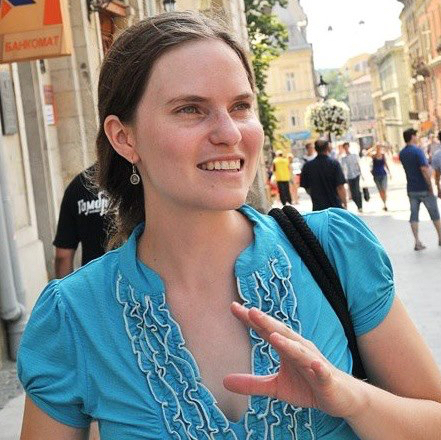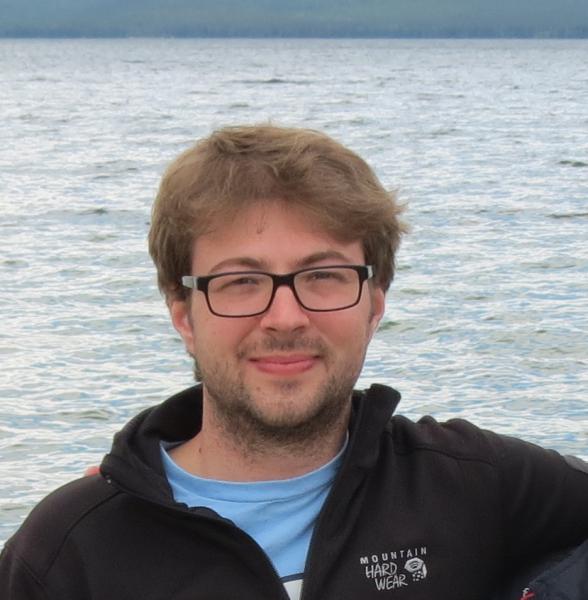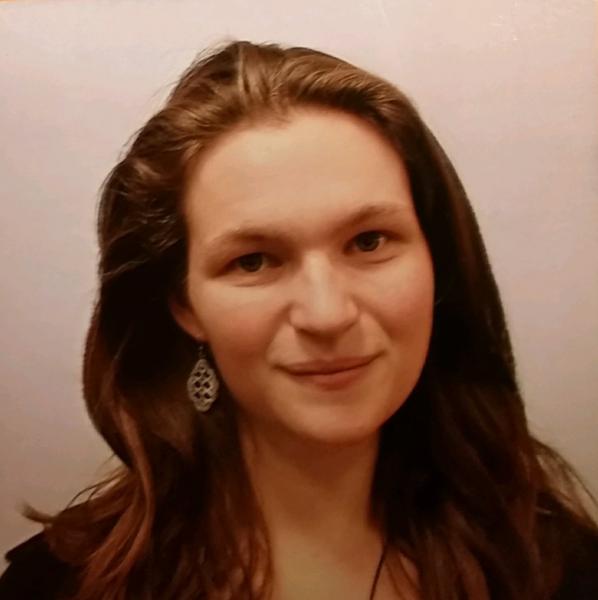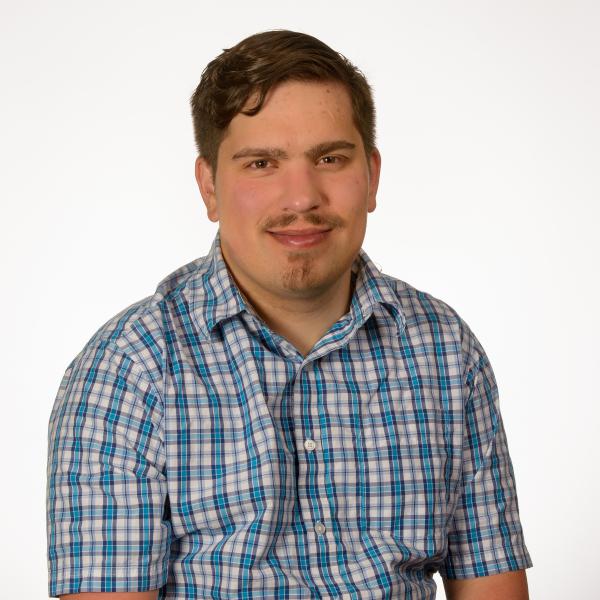grants
Past Cohen-Tucker Dissertation Fellows
2024 Cohen-Tucker Dissertation Completion Fellows
Michael Corsi, History, The Ohio State U, “El Dorado on the Rocks: The Ural Mountains and the Production of Scientific Knowledge in Nineteenth-Century Russia”
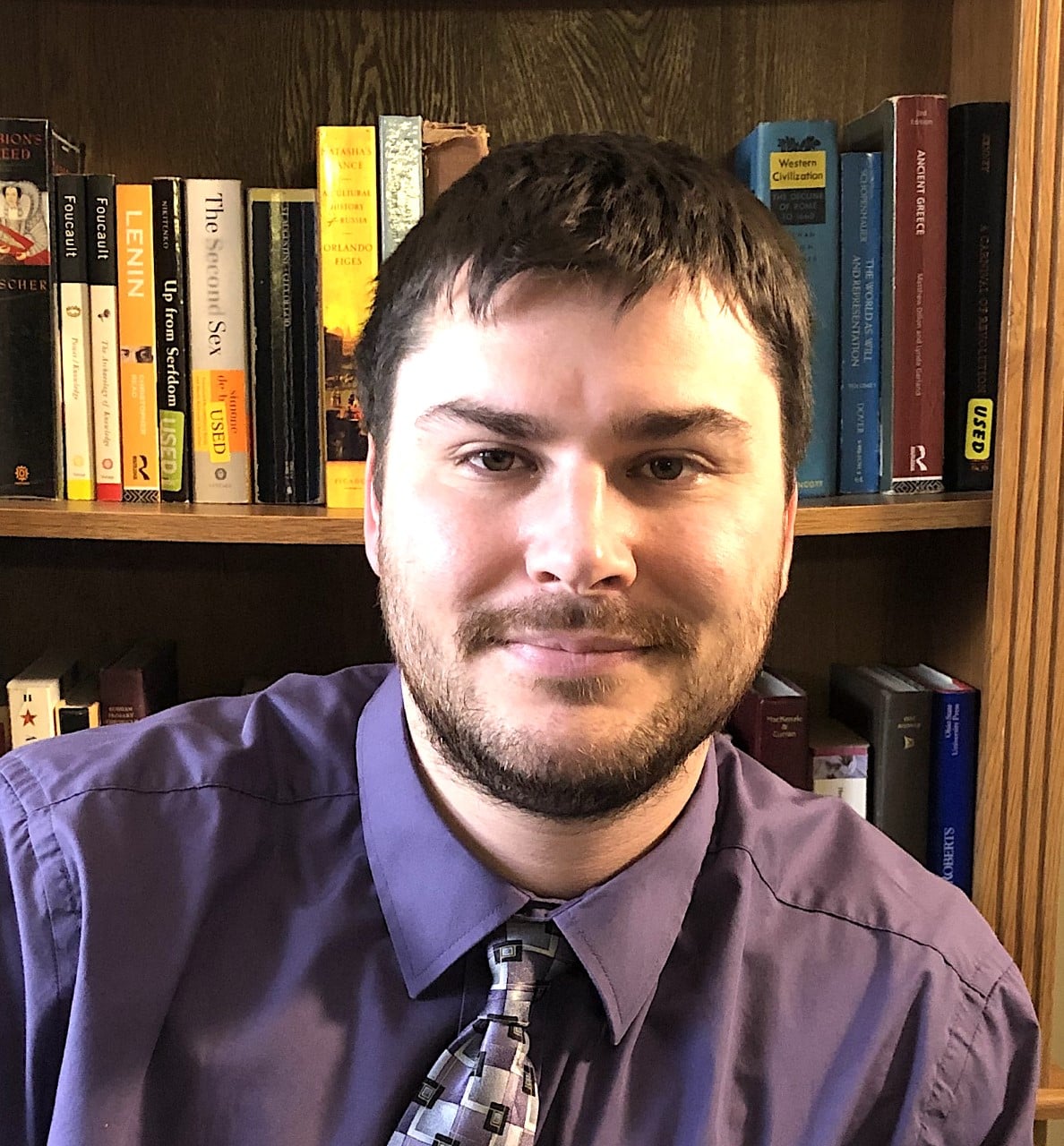
My dissertation argues that the Russian empire—its scholars, institutions, and generous funding—was instrumental to the process of global scientific-knowledge production. It takes one part of the Russian empire—the Ural Mountains—as demonstrative of the influence Russia had over nineteenth-century scientific thought. The Urals’ contributions to nineteenth-century science included, among other things, discovery of the first indigenous European diamonds, development of new theories regarding the mineralogical composition of the planet, identification of the Permian geological period, and characterization of global weather systems and biodiversity. Discoveries such as these filled gaps in the scholarly understandings of the time and contributed to some of the most important scientific publications of the nineteenth century. Furthermore, my dissertation also examines intra-imperial networks alongside inter-imperial ones. It traces the ways in which Urals scientists collaborated with other experts and scientific institutions within the Russian empire, thereby demonstrating the contributions of this region to the growth of imperial-era science.
Jessica Ginocchio, English and Comparative Literature, U of North Carolina at Chapel Hill, “Intersecting Worlds: Animal Consciousness, Reality, and Imagination in Eastern European Fiction”

“Intersecting Worlds” examines the integration of animal minds into the narrative fabric of primarily Russian fiction across several epochs. From Lev Tolstoy’s war horses to Andrei Platonov’s blacksmith bear, animal points-of-view are used by many of Russia’s most prominent writers, ranging in technique from first-person animal narrators to animals as focal characters within larger narrative frameworks. Structured around three chapters and an epilogue, the project uses careful close readings to characterize representations of animal minds and contextualize them within literary aesthetics, contemporaneous scientific thought, and socio-political conditions. Spanning the period from 1865 until 1930, the central chapters encapsulate an era marked by profound intellectual, scientific, and socio-political shifts. In works by Tolstoy, Chekhov, Bulgakov, and Platonov, we can see the evolution of realism to modernism to early Soviet experimentation. A final epilogue examines the afterlife of these tendencies in the work of contemporary and postmodern writers from both Russia and Ukraine, including Viktor Pelevin, Tatyana Tolstaya, Linor Goralik, Victoria Amelina, and Andrei Kurkov. The dissertation seeks to answer fundamental questions about human-animal relationships, perceptions of animality, growing ecological consciousness, and the nature of reality itself. While it contributes to the growing field of scholarship interested in animals and environment Russian literary studies, though its specific interventions to marry the concerns of animal studies with narrative theory and cognitive literary studies. Ultimately, I hope to show that animals are not a niche concern, but a central one, and the project of imagining and narrating animal consciousness is fundamental to the study of narrative, theories of consciousness, and understandings of what it means to be human, to be alive, and to exist in the world.
Luke Jeske, History, U of North Carolina at Chapel Hill, “Faith, Nation, and Empire: Nineteenth-Century Russian Pilgrimage to the Holy Land”
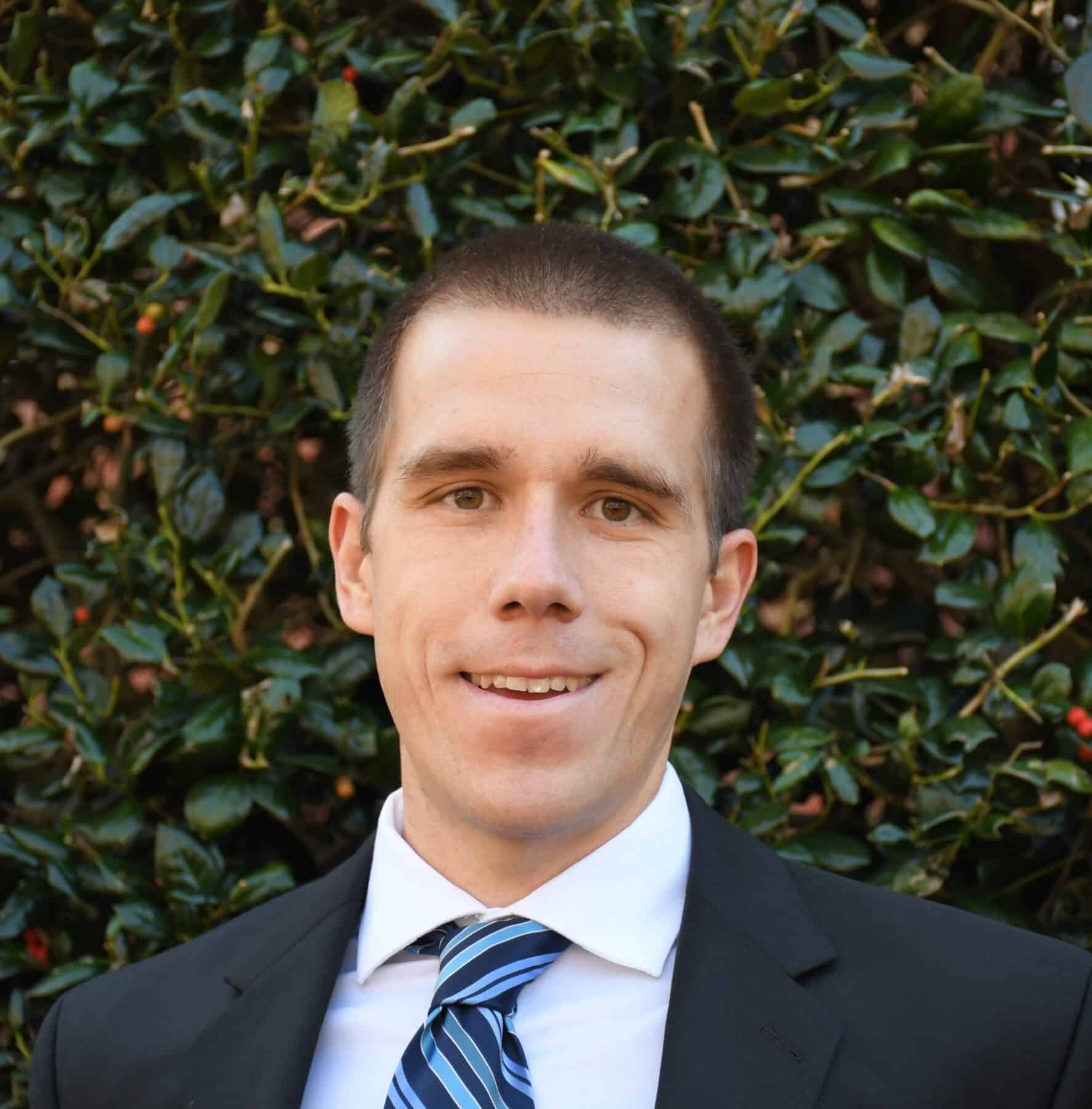
Throughout the nineteenth century, Russian Orthodox Christians made pilgrimage to Ottoman Palestine, or the Holy Land, a vital and dynamic part of religious and national life. Tens of thousands made the journey, relying on patchwork support systems to realize their dreams of walking in Jesus’ footsteps. Many considered the journey itself a manifestation of personal and collective piety, an act rewarded by God and capable of knitting together thousands of compatriots shuffling toward Jerusalem. Sharing a common destination, Russians diverged on how to practice and interpret pilgrimage. Whereas champions of imperialism stressed the projection of geopolitical power, others emphasized neutral piety. Some, mostly peasants, struck out on their own, embracing apocrypha and heterodox rituals while avoiding Russian officials. I argue that examining these developments in pilgrimage enables us to better understand the broader modernization of Russian Orthodox Christian religiosity, by which I mean the adaptation of religion to accommodate the myriad technological, social, cultural, and legal changes unfolding over the century. While scholars have produced insightful scholarship on various aspects of this religious revitalization, I am one of the first to examine it in the trans-imperial context of pilgrimage and thereby expose Orthodoxy’s tremendous capacity to mobilize the Tsar’s subjects. Drawing on travel memoirs, periodicals, and published archival materials generated around pilgrimage, I shed new light on the religious groundings of Russian ethno-nationalism and imperialism.
Weronika Malek-Lubawski, Art History, U of Southern California, “Between Moscow and Paris: Łódź and the Transnational Avant-garde Network”
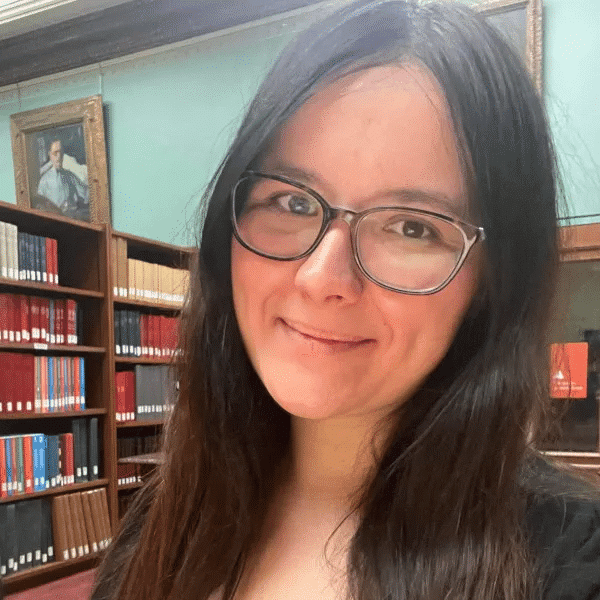
My dissertation reconstructs the artistic network between Russia and Western urban centers through the activities of artists connected to Łódź, Poland. I study Russian-German sculptor Katarzyna Kobro (1898-1951), Polish painter and art theoretician Władysław Strzemiński (1893-1952), and Polish-Jewish painter and designer Henryk Berlewi (1894-1967), who were all crucial in facilitating international contacts and institutional collaborations between the avant-garde movements. Kobro and Strzemiński moved to Poland from Russia in 1921 and were the first artists to share and implement the ideas of revolutionary avant-garde there. Berlewi radically changed his art upon his encounter with Suprematism and carried this influence West after moving from Poland to Berlin and Paris. Strzemiński, Kobro, and Berlewi maintained a lifelong commitment to abstraction, that was reflected not only in their artworks, but also through self-publishing, teaching, and involvement in organizing collections and archives of contemporary art. I will highlight how these artists drew on the artistic discourse and institutional models that emerged during the Russian Revolution to re-imagine and implement avant-garde ideas in their new locations and contexts. In my argument, studying this artistic mobility allows us to broaden and de-center the histories of artists who were directly or indirectly influenced by the revolutionary avant-garde and departed from it to develop their individual art theories like Unism or Mechano-Faktura. My research draws on museum collections, primary sources, memoirs, and institutional histories. I also consider the impact of archival gaps and the Cold War on the existing historiography. The temporal scope of my dissertation will focus on 1921-1939, but in my last chapter, I will analyze Kobro’s, Strzemiński’s, and Berlewi’s legacy in the 1950s and the 1960s.
Alexandra Noi, History, UC Santa Barbara, “From Ape to New Socialist Man: Soviet and Chinese Forced Labor Camps as Laboratories of Carceral Eugenics”

My dissertation is a comparative intellectual and social history of forced labor and reeducation in the Soviet Union and China. I study the ideas of human nature and practices of its transformation through the lens of incarceration. I conceptualize Soviet Gulag and Chinese Laogai forced labor camps as socialist scientific projects of molding humans and nature rooted in ideas of plasticity in the natural and social sciences of the early and mid–twentieth century. In the Soviet Union, those were Marxist ideas of the value of labor in the evolutionary transition “from ape to man,” as Friedrich Engels wrote, the theory of behavioral conditioning of the Russian scientist Ivan Pavlov, and the pedagogical methods of the Soviet Ukrainian educator Anton Makarenko. In China, social engineering was an intellectual fusion of indigenous theories of moral rehabilitation, Marxist and Leninist thought, Mao Zedong’s original contributions, and Soviet penal and educational experiments. I explore how in both countries the institutions and practices of forced labor were devised as a means to achieve revolutionary ends—the concurrent goals of modernizing the old “backward” society and economy, remaking people into new socialist citizens, and transforming the natural environment.
Nicholas Seay, History, The Ohio State U, “Cotton Modernity: Agricultural Labor, Environment, and Materialism in Soviet Tajikistan, 1945-1991”

My dissertation explores the technocratic intensification of cotton monoculture in post-WWII Soviet-Tajikistan, which in turn was used to increase the USSR’s industrial-use cotton supply and as exports on the global market. I argue that this intensification produced a series of crises in environmental protection and allocation of labor resources, prompting reform-minded scientists and state agency employees to respond with several technocratic responses that addressed isolated problems, but fell short of directly attacking the monoculture itself, a non-negotiable feature of relations between Moscow and Central Asian Republics like Tajikistan and Uzbekistan. To increase the yearly harvests of raw cotton, planners and collective farms made production more efficient through rational use of water resources, irrigating previously uncultivated lands, new seed selection strategies, and the production and application of chemical pesticides and fertilizers. By utilizing an environmental and materialist approach and analyzing how state officials responded to these crises, my research shows how the case of Tajikistan’s cotton production speaks to important north-south dynamics within the multi-ethnic and multi-confessional Soviet “empire” and how the case of Soviet cotton fits within global economic and environmental trends of the late-20th century.
John Webley, Slavic Languages and Literature, Yale U, “Ink, Paint, and Blood: India and the Great Game in Russian Culture”
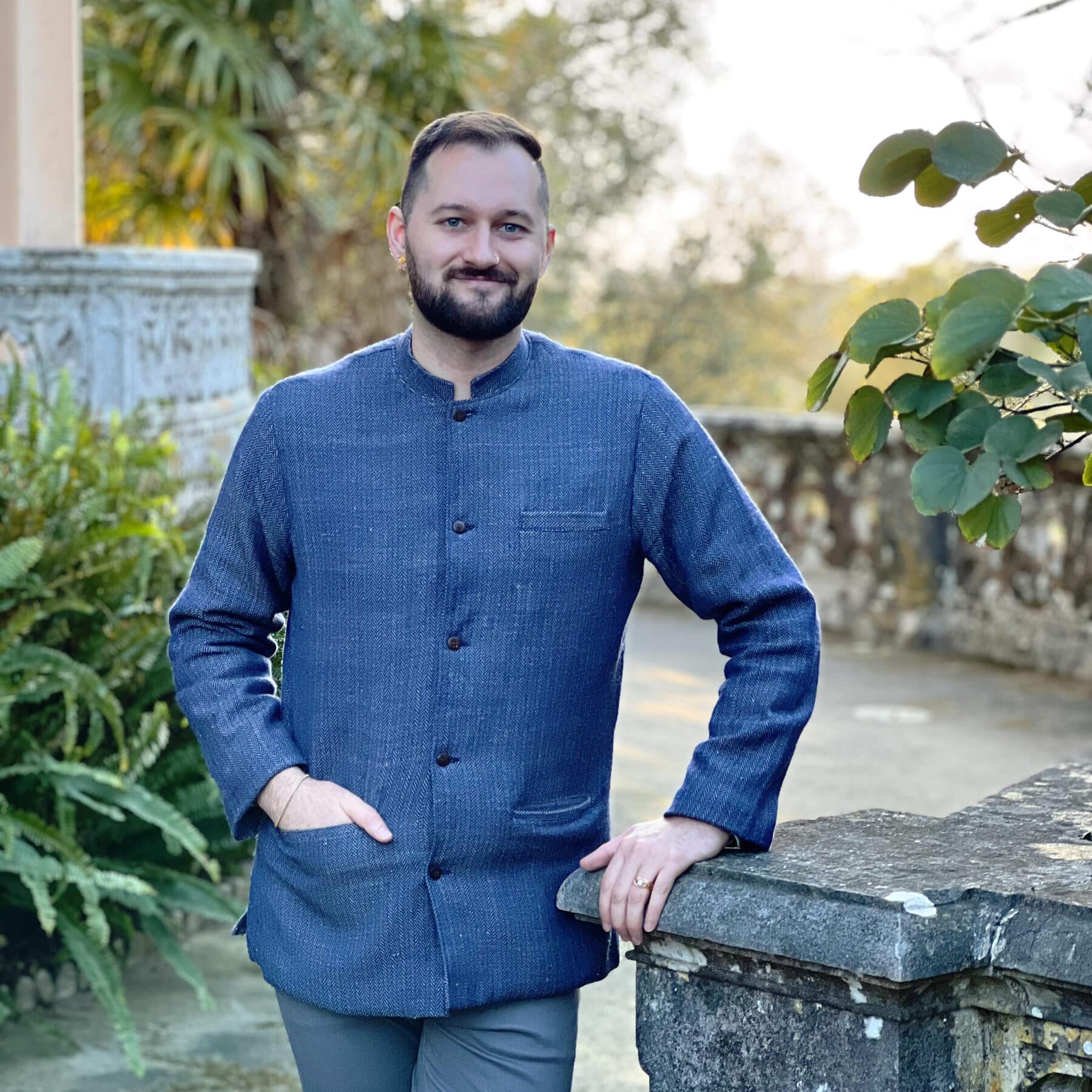
Ink, Paint, and Blood examines Russian depictions of India created during the so-called Great Game, the rivalry between Britain and Russia for dominance in Asia. As a framework for understanding history, the Great Game (or Tournament of Shadows in Russian) reduces the complex, multipolar politicking between Europe and Asia down to a sensational story of spies and soldiers clashing on the Roof of the World. Nonetheless, scholars have demonstrated how this rivalry emerged as a dominant theme in Victorian media—even before the term ‘Great Game’ entered popular usage. Far less attention has been paid to how Russia created, imagined, and responded to this rivalry. My work elucidates the dominant concerns that emerged in Russia’s “Great Game” media—mapping, border disputes, espionage, surveillance, political upheaval, and trade—and shows how these themes adhered repetitive aesthetic dimensions. I achieve this through a trans-medial approach, which brings together travelogues, architecture, painting, poetry, material culture, and ballet from Russia, Britain, and India. By focusing on Russian depictions of India, my work shows how the discourse of the Great Game enabled Russians to articulate their own imperial aesthetic through comparison, mimicry, and differentiation from the British. As Russians retraced the journeys made by British explorers, spies, conquerors, and artists, they used their own creative practices to inspect British imperial culture and its forms. In drawing attention to both the narrative and formal aspects of the Great Game, my project reveals the broader impact that this rivalry had on shaping Russian imperial ideology and aesthetics.
Yacov Zohn, History, U of Wisconsin-Madison, “Tactical Representation: Political Goals in the Soviet National Soccer Team (1952-1972)”
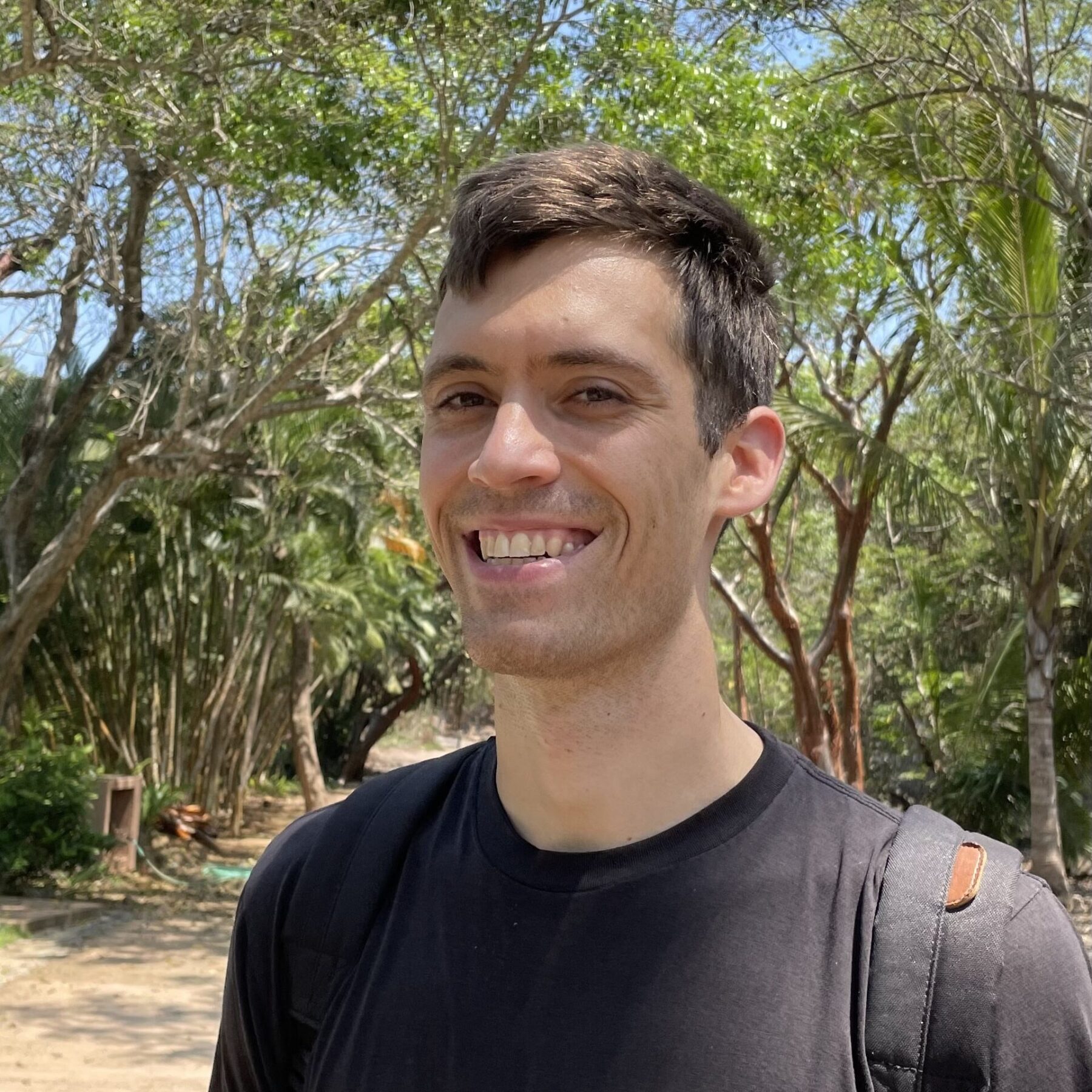
My dissertation probes the fractured political nature of soccer in the Soviet Union through the lens of the Soviet national soccer team from the team’s official genesis in 1952 to the end of its “golden era” in 1972. The sport featured a complex representation of governmental organizations, industries, politicians, and sports administrators who actively intervened in sporting affairs, vying for power and influence. My research explores institutions, individuals, and empire to investigate the political complexities and divides that festered in and around the Soviet soccer team in the struggle to shape its image as an icon of “Soviet” identity. I am particularly interested in examining the reasons behind the shifting locus of representation embodied by the national team: why and how Moscow, endowed with all of the USSR’s most important political institutions, dominant sport institutions, and the best clubs in the country, lost its monopoly on the national team, with Tbilisi and especially Kyiv growing in importance. My dissertation explains how a mix of key individuals, political changes, shifting societal norms, strengthening nationalism, fragmentation of power in Moscow, evolving regional sport/governmental institutions, and hockey (of all things) played a role in significantly impacting the national team’s meaning, composition, and results. The scope of my project incorporates little known regional sport publications, newspapers, interviews, and memoirs of key participants, as well as research in archives, libraries, and online sources across the USA, Switzerland, Germany, France, England, Mexico, Russia, Ukraine, and Georgia.
2023 Cohen-Tucker Dissertation Research Fellows
Griffin Creech, U of Pennsylvania, History, “Buriats Beyond Borders: Making and Unmaking Multi-Layered Citizens in the Russia-Mongolia Borderlands, 1890-1938”

“Buriats Beyond Borders” is a political and social history of citizenship in the Russia-Mongolia borderlands. Using sources in Russian, Mongolian, and Buriat, it considers attempts by the Russian imperial, Soviet, and Mongolian states to claim pastoral nomadic Buriats as citizens. The Buriats’ fluid borderland environment oriented them south to Mongolia and west to St. Petersburg and Moscow. My dissertation investigates how citizenship’s equalizing contentions operated amid porous borders, cross-boundary interactions, and ethno-confessional inequalities, and surveys Buriat reactions to state citizenship projects. After tracing the late-nineteenth-century advent of Russian imperial citizenship, I examine Buriat nationalist ideas on membership in a Russian-dominated empire between 1905 and 1917. Following Buriats who crossed this border between 1918 and 1938, I engage the Mongolian socialist state’s perspective, comparing Soviet and Mongolian efforts to make Buriats citizens. Nira Yuval-Davis’s idea of the “multi-layered citizen” conceptualizes how overlapping state initiatives interacted with Buriat visions of citizenship to produce heterogenous citizens who were integrated into certain spheres yet excluded from others. My dissertation provides a new way of understanding the Russian Empire’s and Soviet Union’s presence in Asia by seeing borderlands and citizenship as sites of interaction, eschewing the received frameworks of ideology, geopolitics, and diplomacy.
Alexandra Dennett, Harvard U, History of Art and Architecture, “Paths of Modern Photography in Central Asia (1890-1940),” Recipient of the Women’s and Gender Studies Fellowship

Why do certain images come to represent a place? How does a photographer’s identity impact the photographs they take? These two interrelated questions are central to my dissertation, which examines the role of photography in representing—and misrepresenting—the transformations of Central Asia, from a colony of the Russian Empire into a laboratory for the promotion of the Soviet model and a site for the development of national identity. During a period animated by successive waves of imperialism, revolution, and industrialization, photographs shaped ideas about this region and its culture, especially since circulation in print enabled their transmission across great distances. By comparing the shifting aesthetic and ideological priorities of foreigners who visited Central Asia with those of local practitioners, my research foregrounds the diversity of perspectives recorded in the photographs produced in this major crossroad. I emphasize the remarkable prominence of women in the photographic narration of Central Asia as I consider a variety of photographic “actors:” travelers, studio professionals, amateur correspondents, photojournalists, and photo-editors. These intersecting narratives allow us to better understand how the camera was more than a tool for recording experience; it also enabled photographers to navigate, and even to define, the divergent paths of modernity.
Emma Friedlander, Harvard U, History, “The Soviet New Age: Alternative spirituality and the collapse of communism, 1975-2000”

My dissertation examines the popular culture of alternative spirituality in the Soviet Union from 1975-2000. I approach this history from below, centering the ordinary people most associated with the popular phenomenon, especially women and the lower-to-middle classes. This project asks: what does the Soviet New Age tell us about the lived experience of Soviet collapse? How does it reveal ordinary people’s navigation of the ideological, spiritual, and material crises that engulfed society at this time? I suggest that people experimented with alternative spirituality to fill the spiritual and ideological vacuum left by the collapse of communism. Their attraction to the alternative reflected distrust towards official institutions and ideologies – and overall sense of alienation – that placed the Soviet case within the global processes of late twentieth century postmodernity. I study alternative spirituality as it emerged against the background of Eastern European Christian tradition then subsumed to state atheism in Russia, Ukraine, Lithuania, Latvia, Estonia, and Moldova.
Sophia Kalashnikova Horowitz, Harvard U, History, “Popular Participation in Political Policing Under Stalin and Khrushchev, 1937-1965: The Secret Lives of Soviet Informers”
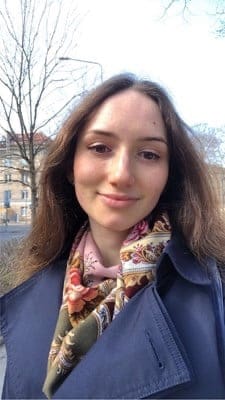
My dissertation, which includes case studies from Georgia, Estonia, Latvia, Lithuania, Ukraine, Moldova, and Germany, will present the first pan-Soviet history of informing under Stalin and Khrushchev (1937-1953). My project examines the perspectives of both secret policemen and informers, insofar as these are visible in the archive, attempting to unite the two in a broader history of Soviet informing: what did being an informer mean for informers themselves, and how did it change their social lives? How did secret police officers manage individual informers and informer networks, and how did this change over time? I trace the process of managing an informer, including how informers were recruited, how they participated in or were removed from investigations, and how they were released from their duties. The dissertation will reveal the inner dynamics of policing in a society that went through several cycles of political crackdowns and thaws, including the transition from the Stalinist dictatorship to the post-Stalinist system. My research will explore several types of documents located in the National Archives and political police archives in former Soviet republics and countries of the Warsaw Pact. These archival files include reports from the regional organs of the political police to the central political police authorities, the documents of formal inspections of the work of regional and local police branches, orders of the central organs, and political police textbooks, case files, and card catalogues. My project will explore the ways in which informing practices shaped individual experiences, those of families and social networks, and those of communities across the Soviet Union. Changes in political policing contributed to ordinary people’s shifting perceptions of their role as participants in the process of governing their country; the experience of informers presents a vital insight into individuals’ understanding of civic duty and citizenship.
Alexandra Zborovsky, U of Pennsylvania, History, “Should I Stay or Should I Go: Jewish Repatriation, Reunification, and Emigration from the USSR 1955-1995”

During the second half of the twentieth century, Offices of Visas and Registration across the USSR received almost 1.5 million applications from Soviet Jews with a seemingly audacious request: an exit visa. This dissertation explores how Soviet Jews re-outlined the USSR’s ambivalent stance on population movement and more specifically, emigration. Though the contemporary moment often prioritizes conversations on immigration, questions of emigration have produced equally if not more controversial tensions between the state and its citizens over the last several centuries. My investigation begins in the mid-1950s, when 30,000 Soviet Jews immigrated to Israel through an initial repatriation to Poland, and continues through 1995, by which point over one million Soviet Jews found themselves scattered across the globe. While internal migration, displacement, and urbanization once proved vital to early Soviet state-building, by the 1950s the USSR’s policies on movement were fraught with contradiction. And by the mid-to-late twentieth century, when the USSR sought to hinder Jewish emigration, Soviet Jews circumvented its efforts. By emphasizing the agency of everyday emigres, my project explores how Soviet Jews engaged both extra-statal networks, such as the philanthropy or the family, and the USSR’s fraught legal and theoretical conceptions of movement to facilitate their emigration.
2023 Cohen-Tucker Dissertation Completion Fellows
Michael Brinley, U of Pennsylvania, History, “The Cities They Wanted and the Cities They Built: Soviet Chief Architects and Urban Planning in the Era of Developed Socialism, 1954-1985”
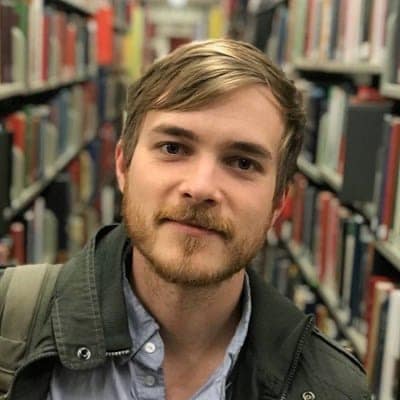
My dissertation tells the story of the development of city planning institutions and urban politics in the period from 1957-1985. Drawing on a wide range of published and archival material from five major cities and three former Union republics, I examine how debates among city planners and between architects and various representatives of emerging social sciences in the 1960s were translated into policy that transformed urban politics and provoked widespread public debate well before perestroika. The urbanization process, a civilizing project imbued with the ideological content of the communist party, was supervised by technocrats who were increasingly in dialogue with international counterparts over the question of the limits of growth. By exploring these connections, I put the Soviet experience in dialogue with a broader literature about urban renewal, development, de-industrialization, and neoliberalism in the second half of the twentieth century.
Yaakov Lipsker, Jewish Theological Seminary, Modern Jewish Studies, Everyday Jewish Nationalism and the Creation of a Citizenry-in-Exile: The Zionist Movement in Late Imperial Russia, 1897-1917″

Lipsker’s research looks at the making of the Zionist movement in imperial Russia between 1897 and 1917. The movement’s founders and early leaders assumed that their sought-after homeland in Palestine would be populated primarily by Jews emigrating from the Russian Empire, home to the largest Jewish population in the world before World War I. Lipsker’s dissertation focuses on the hundreds of Zionist activists in imperial Russia’s western borderlands who set out to re-make ordinary Jews – family members, neighbors, and communities – into nationalist Jews. Using archival materials from three continents and published sources in Russian, Hebrew, Yiddish, and German, his dissertation traces the dissemination of Zionist ideas and practices in classrooms, synagogues, workplaces, salons, and within families, and how Zionists were influenced by parallel national movements in the Russian Empire. His approach emphasizes everyday interactions between movement leaders, local and regional activists, and ordinary Jews in the construction and maintenance of – and often failure to construct or maintain – nationalized identities in an imperial context.
Ksenia Pavlenko, Cornell University, Art History and Visual Studies, “Seeing Expansion: Representation in the Visual Culture of the Late Russian Empire”
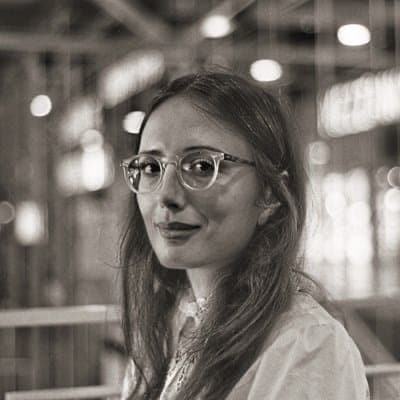
“Seeing Expansion: Representation in the Late Russian Empire’s Visual Culture” examines how photography was the primary channel by which the empire constructed discriminatory perceptions of communities from Russian territories in Asia. Drawing on the hierarchies disseminated by ‘type’ photographs, imperial commissions such as paintings, objets d’art, illustrated volumes, and public monuments were designed to beguile viewers and portray certain communities as a timeless or temporally delayed Other. While official photographs crystalized new understandings of difference that validated the violence emanating from Russia’s center onto its surrounding regions, photography conveyed contradictory representations of identity as it spread to territories in Central Asia and eastern borderlands. A comparative approach to modernity reveals how the dazzling effects of media and art proved unwieldy to imperial motives, largely due to the unprecedented forms of expression that photography engendered. While early photography’s conventions reflected expansionist ideologies, the medium channeled unprecedented forms of subjectivity that emerged out of the empire’s refusal to integrate its eastern territories.
2022 Cohen-Tucker Dissertation Research Fellows
Allison Brooks-Conrad, U of Pennsylvania, Music, “Zhenskaya Muzika: Gender, Labor, and Music in the Underground and the Apartment during Late Soviet Socialism,” Recipient of the Women’s and Gender Studies Fellowship
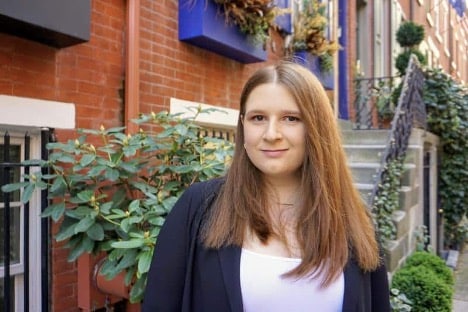
This dissertation investigates how women living in Soviet Russia used music in their attempts to conform to and diverge from Soviet state policy, social expectations, and gender roles during the late socialist era in the Soviet Union. Brooks-Conrad approached this topic by identifying the intersection of women’s labor and deterritorializing processes and by analyzing performances of femininity through musical repertoire. She contends that women used music and sound to create deterritorialized spaces, out of sight (or earshot) of state authorities. As a result, their labor was invaluable in the maintenance and longevity of different unofficial Soviet music scenes. She interrogates how women used music to articulate a public-facing femininity in line with Soviet expectations. She argues that one way this self-presentation took place was through the music women actively sought out and listened to, as well as through their performance of gendered musical genres. In comparing these seemingly distinct scenes and how women figured in both, she uses a gendered analytic to dismantle the official/unofficial culture binary while showing the points of convergence and significant overlap in scenes of Soviet cultural production, relying on a combination of archival research, printed primary sources, musical analysis, and oral history.
Albert Cavallaro, U of Michigan, Ann Arbor, History, “From Tver to Tashkent: Exploring Citizenship and Nation in 19th Century Russian Museums”
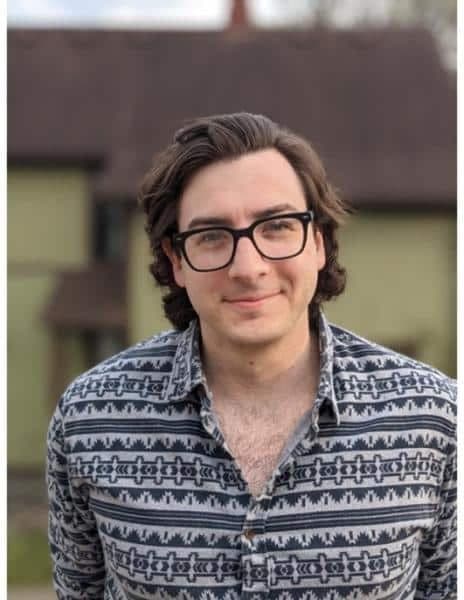
Cavallaro’s dissertation forms two interlocking microhistories examining the intertwined trajectories of two 19th century Russian imperial museums: the Tver Historical Museum, which opened in provincial Tver in 1866, and the National Museum of Turkestan, which opened in colonial, Central Asian Tashkent in 1876. Following these museums from their founding to 1917, his study puts the empire’s colonies and provinces into direct conversation for the first time to show how geographically dispersed but intellectually connected communities engaged in related meaning-making projects. His research operates on three scales: the local, imperial, and global. At the local scale, he examines travelogues, memoirs, provincial newspapers, and exhibition materials to reconstruct the daily life of museums’ employees and visitors. At the imperial scale, Cavallaro explores various literary works and publications of archaeological and ethnographic societies to argue that intellectuals in Moscow and St. Petersburg apprehended provincial and colonial sites in remarkably similar terms: as places of exploitation, where raw materials could be collected and sent to the center. At the global scale, he considers how museums, a new European technology, were involved in networks of knowledge production beyond the empire. His dissertation shows these museums engaged in a single project to historize and create proper models of Russian citizenship and nation. Imperial officials simultaneously claimed affinity with Europe and sought to “Europeanize” museum visitors, and, by extension, the empire itself.
Kim Lacey, Washington U, St. Louis, History, “Border Crossers and the Making of the Russian Far East, 1860-1938”
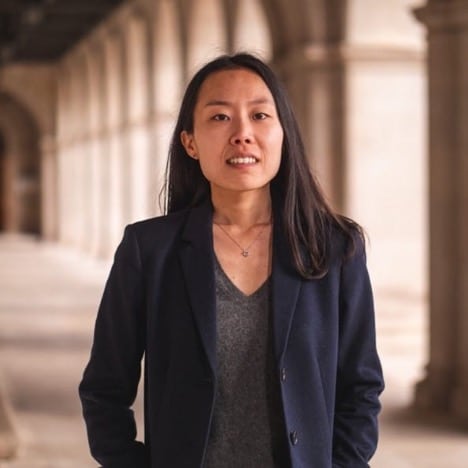
Taking the city of Vladivostok as the locus of analysis, Lacey’s research challenges a preexisting portrayal of the Russian Far East as a quintessentially Russian place. In this project, she traces the movement of people from Japan and Korea to the RFE between 1860 and 1938 and examine their roles and place in the community. Vladivostok is a crucial site for the study of migration during imperial expansion since it is home to a major port and the terminus of the Trans-Siberian Railway that linked Europe to Asia. It is also close to several East Asian countries. Lacey’s analysis covers major events, including the Russo-Japanese War, the Japanese intervention in the Russian Civil War, and Stalin’s Great Terror. “Border Crossers” breaks new ground by foregrounding the overlooked experiences of transnational migrants and studying the role of gender, ethnicity, and class. The work is based on primary sources collected in archives, including the Russian/Soviet government records, local newspapers, and travelogues. Interviews with individuals in Kazakhstan whose ancestors had migrated to the RFE, personal collections, and memorabilia supplement these archival sources and open up the relationship between the state and individuals for detailed examination. Triangulating analyses of state records, interviews, and other sources offers a new perspective on how migrants negotiated their place in Vladivostok. Simultaneously, it reveals how the RFE was transformed by various migrant communities.
Yacov Zohn, U of Wisconsin, Madison, History, “Homo Sovieticus Goes to Extra Time: Constructing the Soviet Image in Soccer (1946-1992)”

Zohn’s project examines the interplay of local, national, and supranational forces in the politics of representation in the Soviet Union through the lens of the Soviet national soccer team. In tracing the history of the team from the Post-War era to its final collapse in 1992, he aims to understand and illuminate how the Soviet political system sought to form the “ideal” image of the USSR abroad and at home. He will structure my argument by means of selected matches/tournaments of the USSR team that serve as case studies, which thread wider trends. His questions will probe the internal and external dynamics of the team. For example, how did performance on the field reflect/deflect and affect the political landscape? Was the multi-ethnic character of the team an advantage on the field of play, or not? A federation with one of the most heterogeneous populations on the globe was often represented by the narrowest regional choices, with local clubs (especially from Moscow and Kiev) often doubling as the USSR national team. He will scrutinize this paradox within this context through a combination of archival research and interviews primarily in Russia as well as in Ukraine.
2022 Cohen-Tucker Dissertation Completion Fellows
Zukhra Kasimova, U of Illinois, Chicago, History, “Hybridizing Sovietness, Modernity, Nationality and Provinciality in the Post-World War II Uzbek SSR (1941-1981)”
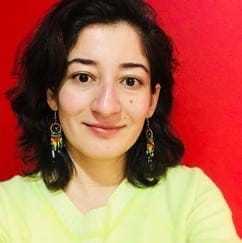
Kasimova argues that Soviet modernity was essentially a hybrid concept. Within this framework, Central Asia as a region ceases being a periphery of the Soviet world and becomes central for understanding processes of hybridization of Soviet modernity. Her project is aimed at decentering Eurocentric narratives of modernity. The Soviet modernity she suggests is multi-lingual; it allows a place for the persistence of Islam in the region (as both religion and cultural text), and it implies the active role of local elites in [re]shaping messages and policies of the center and directly influencing them. The project also explores the heterogeneous nature of the Central Asian region itself, highlighting its internal social, gender, and national stratifications and conflicts that defy any binary explanations and oppositions. Ultimately, Kasimova argues that the hybrid Uzbek modernity decisively influenced the normative Soviet project – by carving in it a place for “Muslim” cultural identification, a concept of national science, and toleration of “national” traditionalism.
Alexander McConnell, U of Michigan, History, “Soviet Humanism after Stalin, 1953-1991”
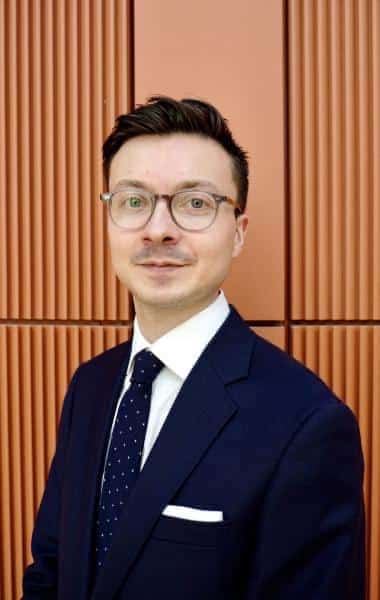
McConnell’s dissertation traces the conceptual evolution of humanism (gumanizm) in Soviet ideological, philosophical, and cultural discourse during the post-Stalin period. While historians of communism have long devoted attention to postwar “Marxist humanist” movements in Eastern Europe, no comprehensive study of humanism in the USSR has been undertaken. By demonstrating the centrality of this concept to both the Communist Party’s attempted revitalization of socialism after 1953 and dissident challenges to official ideology, it charts the emergence of a new ethical imperative that far outlasted other elements of the post-Stalin cultural “thaw.” At the same time, his project reveals how efforts to draw a moral line under Stalin’s “cult of personality” were complicated by continued reliance on a conceptual vocabulary adopted during the 1930s. Maxim Gorky’s Stalin-era conception of humanism as hatred for enemies persisted alongside the term’s historical associations with Renaissance thought and abstract love for humankind. By examining how contests over the scope and meaning of humanism helped to reshape ideals of socialist personhood after Stalin, McConnell’s dissertation sheds light on a previously unexamined area of late Soviet culture and offers a new intellectual genealogy of Gorbachev’s reform campaigns of the 1980s. His project likewise represents a timely intervention into the nascent scholarship on humanism’s global manifestations during the twentieth century, linking Soviet debates to Cold War ideological contestation with both Maoist China and the West.
2021 Cohen-Tucker Dissertation Research Fellows
Samuel Fajerstein, Indiana University Bloomington, “Between Cooperation and Contestation: Agricultural Interactions in the U.S.A. and U.S.S.R., 1917-1991”
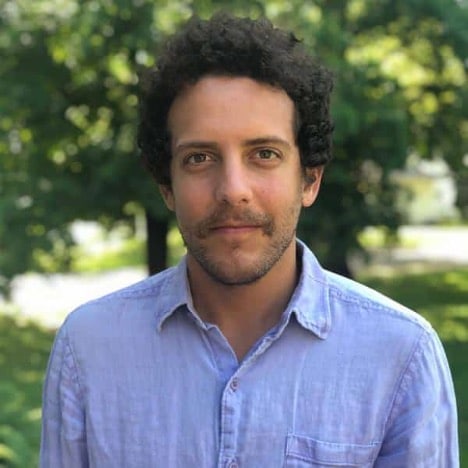
Fajerstein’s project contends that agricultural relations between the Soviet Union and the US constitute one of the most significant pieces of the global developmental puzzle. Utilizing materials from archives in the US and Russia, the dissertation will examine these agricultural interactions from 1917-1991, identifying periods of heightened agricultural transfer and assessing each period for its domestic, international, and global significance. As each state examined and reacted to the other’s agricultural systems, transfers of policies and technologies forged paths across the globe that are perceivable today. From food storage technologies, to global grain prices, to fertilizer production, the current global food system was formed along the fine line between agricultural contestation and collaboration in the US and USSR.
Jennifer Goetz, Columbia University, “Developing Soviet Photography, 1937-1963”
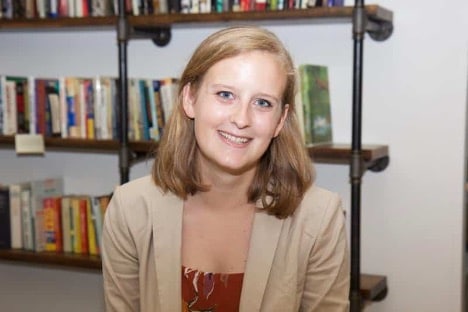
Goetz’s dissertation examines photography as hobby and art in the Soviet Union. Despite prominence in the 1920s, by the late 1930s art photography existed on the margins of Soviet culture. Still, from 1945 until 1963 the Soviet state increasingly supported an amateur camera industry. Why did the postwar Stalinist state economically encourage private photography while discouraging state-regulated professional photography? Goetz’s hypothesis is that the Soviet state invested in the camera industry in response to a perceived growth in popular demand for amateur photography, as well as to competition with camera producers abroad. As photography became more accessible, it became, in the eyes of Soviet artists and critics, a less viable artistic medium. The state economic support for private photography supplied and trained the photographers who participated in the resurgence of public photography during the Thaw from 1953 to 1963, showing an important continuity between two periods.
Luke Jeske, UNC Chapel Hill, “Orthodox Pilgrimage and the Forging of Russian Identity, 1774-1914”

Jeske’s project examines the evolution of Russian Orthodox Christian pilgrimage to the Holy Lands, from the Treaty of Küçük Kaynarca in 1774 in which Ottomans granted Russians access to the Holy Lands, to the dissolution of pilgrimage networks ushered in by war in 1914. His analysis links pilgrimage to the constructions and rearrangements of imagined communities bound by religion, ethnicity, and empire. As pilgrimage evolved over the century, it brought together peasants and princes, monks and muzhiks animated by the same yearning for the Holy Lands and united by their experiences. He suggests they articulated a “Russianness” rooted in ethnicity and a cultural heritage particular to their empire but connected to the Orthodox peoples and places dispersed from the Balkans to the Red Sea. Jeske recovers notions of belonging fostered among Russians and foreign coreligionists, readers and writers, travelers and the home-bound. In showing how pilgrimage enabled ethnic Russian Orthodox Christians to articulate their own visions of modernity, he contributes to ongoing revisions of the history of Russian Empire.
Patrick Monson, Princeton University, “The Multiple Meanings of Legal Pluralism in Imperial Russia’s Baltic Provinces, 1860-1917”
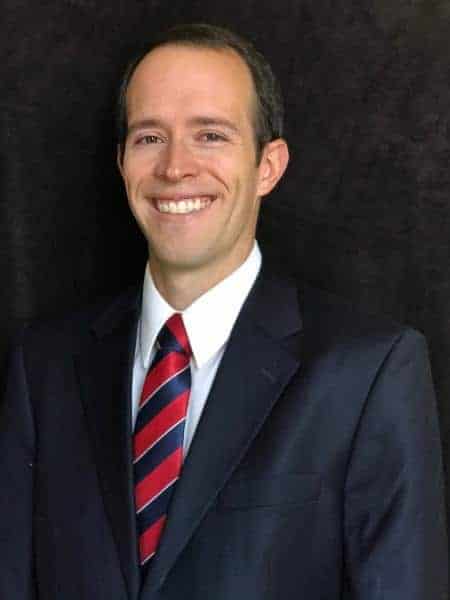
This project analyzes the interplay of law and empire, metropole and periphery, through a study of legal reform in the Baltic provinces. Russia’s progressive judicial reform, announced in 1864, incited tensions over the issue of legal homogenization in the Baltics, where German elites controlled the legal system. In the 1860s and 1870s, some central officials, including Baltic Germans, enabled litigants and defendants to participate in court procedures in their native languages. In seeking to designate central judicial institutions as appellate instances, they perceived the supra-ethnic central government as a more impartial arbiter. Monson’s project examines why, in 1889, officials decided to assume responsibility for the interpretation and application of Baltic civil law. The project will explore how this arrangement resulted in Russian inflected interpretations of local law, or non-native pluralism. Since many of these jurists were highly educated and often proponents of individual rights, as well as belonging to various non-Russian ethnic groups, Monson’s research may contradict previous claims that they arbitrarily and incompetently interpreted Baltic civil law.
James Nadel, Columbia University, “Jewish Speculation: Russian Jews and Financial Investment in Late Imperial Russia, 1870-1917”

At the end of the nineteenth century, Jews made inroads into the Russian Empire’s financial sector, becoming a significant presence on the novel commodity and stock exchanges made necessary by industrial development. Also, urban migration spread Russian Jews across the wide expanse of the imperial domains, allowing their business relationships to form a crucial ligature in the long-distance circulation of capital throughout the Empire. Such economic networks of coreligionists served as both a solid foundation and a limiting constraint for Russian Jewish speculators living under the Tsarist regime, in which ascribed corporate identities determined social orders and where anti-Jewish legal restriction had intensified in the 1880s. Nadel’s dissertation follows these Russian Jews, who, while negotiating the power dynamics of minority life, adapted their commercial activities to the demands of financial capitalism and proved integral to the financial infrastructure of the largest land empire in the world.
2021 Cohen-Tucker Dissertation Completion Fellows
Dominick Lawton, UC Berkeley, “Revolts of Things: The Poetics of Materialism in Russian Revolutionary Literature, 1909-1939”
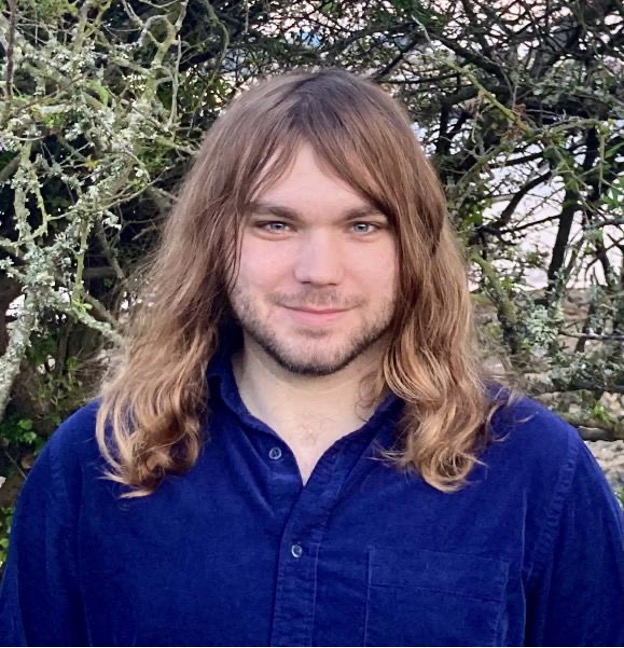
Lawton’s dissertation provides a critical history of how industrial development and economic construction, as refracted through Bolshevik materialist ideology, shaped the aesthetics of early Soviet literature. Lawton’s project investigates how writers gave shape to new “Soviet objects,” industrial products which would resist commodification. Amid the violent ruptures that the early twentieth century brought to Russia, even simple things were artistically represented as containing the basis for a revolutionary transformation of modernity. Through interpretations of four major writers of various styles and backgrounds, Lawton traces how early Soviet literary aesthetics arose from, and intervened in, the attempt to construct a new, anti-capitalist industrial modernity. The authors’ work anticipates many of the concerns of the current “new materialist” turn in the humanities and social sciences. Lawton’s project offers a revitalized history of early Soviet literature from the standpoint of its materialist poetics.
James Nealy, Duke University, “The Shchekino Method: Socialist Modernity and Labor, 1960s-1980s”
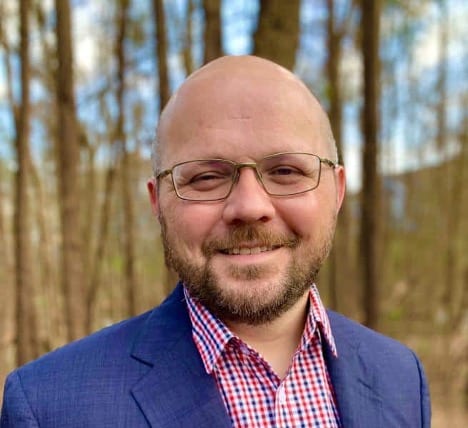
As the Cold War transformed into a struggle centering on socioeconomic factors, the Soviet Union sought to improve economic efficiency. One manifestation of this change was the “Shchekino Method,” a constellation of factory-level managerial and organizational strategies that resembled tactics typically associated with capitalist systems. Tracing the Shchekino Method from its origins through its dispersal across the Soviet Union, the dissertation challenges the “stagnation” trope in contemporary historiography of the Soviet Union and instead examines the Soviet system’s capacity to change. In doing so, it seeks to place the history of Soviet labor into conversation with that of Europe, the United States, and Japan.
Svetlana Ter-Grigoryan, Ohio State University, “‘There is No Sex in the USSR’: Sex, Soviet Identity, and Glasnost, 1986-1991”

This dissertation explores why sex so captured the interest of Soviet people during perestroika (1986-1991). Between 1986 and 1991, Soviet researchers unearthed realities that the state had long concealed, such as rampant prostitution, sexually transmitted disease (STDs), and high rates of sexual violence. Disillusioned with these harrowing new statistics and political stagnation, Soviet filmmakers, artists, and writers used sexuality as a mode of expression during these years. The conversations of reformers, researchers, and creatives revealed deep fissures in Soviet ideology and moral values. By utilizing discourse analysis, this historical study explores the intersection of sexuality, power, and the state in the perestroika-era USSR. I evaluate the context in which these debates existed and their impact on the revolution that led to the USSR’s collapse. Thus, this project addresses directly the Soviet experience with reform and collapse. It also addresses a previously unexplored aspect of Soviet history – the birth of Russia’s LGBT movement, made possible by glasnost. Most importantly, the dissertation demonstrates the importance of sexual revolutions as catalysts for change, solidifying sexuality studies alongside other modalities of historical study.
2020 Cohen-Tucker Dissertation Research Fellows
Elizabeth Abosch, University of Illinois at Urbana-Champaign, “The ‘Outcry from the Criminal Soul’: The Social Imaginary of Song, Community, and State Power in the Soviet Union, 1920-1980”

My dissertation, “The ‘Outcry from the Criminal Soul:’ the Social Imaginary of Blatnaia Pesnia, Community, and State Power in the Soviet Union, 1920-1980,” will examine the creation and function of a social imaginary of the criminal underworld in Soviet history from 1920 to 1980, from the jazz performer Leonid Utesov’s first years in the Soviet limelight as a performer of blatnaia pesnia—criminal, underground, and prison songs—to the songs of Arkadiy Severny, the “king of underground music.” My research will reveal the history of a seldom studied but dynamic genre of Soviet music. I investigate the paradox of the popularity—or perhaps, necessity—of this social imaginary of a criminal society that had no right to exist in the Soviet project. My dissertation will the ways that people engaged with it to negotiate what it meant to be a Soviet citizen, and their relationship with state authority. It will interrogate the effects and of audiovisual technologies of the twentieth century on popular and mass culture, and the influence on or appropriation of folk cultures into mass culture.
Samuel Finkelman, University of Pennsylvania, “Ghetto, Gulag, Geulah: Jewish Nationalism, Inter-ethnic Encounters, and Collective Memory of Catastrophe in the Post-Stalin Soviet Union, 1953-1982”
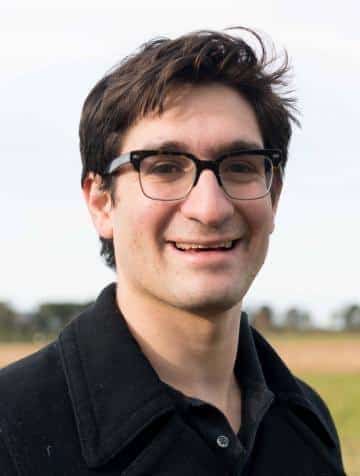
This dissertation explores the encounter between Jewish and Russian nationalist intellectuals and activists in the post-Stalin Soviet Union, focusing on their mutual efforts to construct collective memories of national catastrophe. The protagonists are Soviet Jews who endeavored to revitalize Jewish national consciousness throughout the Soviet Union in the decades following “the black years” of postwar Stalinism, and their Russian interlocutors. The project’s main primary source base is the self-published literature, or samizdat, these activists and intellectuals produced and disseminated to galvanize national identity throughout the 1960s-1980s. Soviet-Jewish national activists’ exchanges, tensions, and affinities with their Russian counterparts–particularly over the topics of nationally experienced suffering, incarceration, and political violence–motivated new Jewish thinking about nationhood, political community and homeland. Exploring the common ideas and dilemmas, the interactions and exchanges, that linked the Jewish and Russian national movements, this dissertation shows why forces traditionally thought of as hostile to Jewish interests nonetheless significantly influenced Soviet Jews in their formulation of a politics rooted in national redemption, or what Jews call in Hebrew “geulah.” Ideally, this reassessment of late-Soviet Jewish nationalism will stimulate further research on how inter-ethnic exchange paradoxically invigorated nationalist politics throughout the Soviet Union in the post-Stalin era.
Kamal Kariem, Princeton University, “Believing Conservation: Altering Land Relations and Indigeneity on the Bikin River”
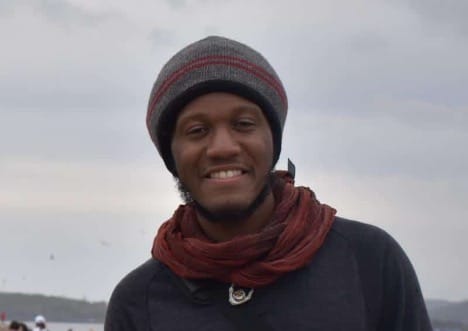
My proposed project broadly investigates environmental governance in the Russian Far East (RFE) through the lens of the recently founded Bikin National Park. Founded in 2015, this National Park is located in the Pozharskii District of Primorskii Krai with offices in Luchegorsk and Krasnyi Yar. Research for the project would primarily occur in Krasnyi Yar and on the Park’s territory and in Vladivostok. This Park is the only protected area in Russia, which has goals not only for the protection of biodiversity but also for the preservation of indigenous culture and traditional ways of life. The largest indigenous group in the region of the Park is the Udege, a small-numbered indigenous people (an official legal designation). From exploratory research conducted during winter 2018, many Udege are happy with the arrangement and the protection of their traditional lands. This satisfaction with the National Park stimulates my research interest in the Bikin National Park as a potential model for how protected areas and indigenous people could relate. Through my project, I aim to understand Post-Soviet transformations in nature, identity, and property triggered by conservation, with an eye toward how conservation work protects biodiversity and preserves cultural practices and ways of life.
Harrison King, University of California, Berkeley, “From Porous Frontier to Cold War Boundary: A Biography of the Russian-Ottoman and Soviet-Turkish Border, 1878-1991”
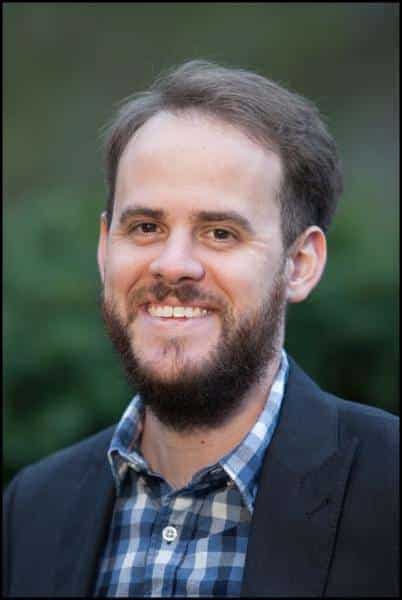
My dissertation explores the entangled histories of the Soviet Union and the Turkish Republic through the prism of state and nation-building campaigns in the former Russian-Ottoman borderlands. Focusing on the provinces of Batum, Kars, and Ardahan, annexed by the Russian Empire in the Russo-Ottoman War (1877-78), I trace the remaking of this multiethnic frontier as it was divided between two revolutionary states after the First World War. Through a bottom-up comparison of Soviet and Turkish modernization drives in Batumi in Soviet Georgia and Kars in eastern Turkey, I juxtapose the process of building a multinational socialist state in Transcaucasia with the equally transformative drive to construct a homogeneous Turkish nation-state, underscoring the affinities between two utopian political projects that aimed to reshape their societies in radical ways. Grounding my research in the experiences of predominately Muslim populations as they encountered and contested Sovietization and secularizing Kemalist reforms at the local level, I demonstrate how similar post-imperial trajectories unfolded across the Soviet-Turkish border as internationalist Bolsheviks and Turkish nationalists observed each other closely and violently enacted their kindred visions of modernity. Lastly, as both states became increasingly concerned with securing their borderlands and forging “ideal” citizens, I show how fruitful cooperation and anti-imperialist solidarity during the interwar period descended into a bitter Cold War rivalry that persisted until the Soviet Union’s dissolution in 1991.
2020 Cohen-Tucker Dissertation Completion Fellows
Matthew Honegger, Princeton University, “Stalinist Cultural Diplomacy and the Origins of Soviet-U.S. Musical Exchange, 1925-1960”

“Stalinist Cultural Diplomacy and the Origins of Soviet-U.S. Musical Exchange, 1925-1960” recovers an early history of Soviet efforts to forge musical ties with the United States. Drawing on institutional records, correspondence, scores, recordings, memoirs, and published and unpublished music criticism gathered through extensive archival work in the United States and Russia, I reassess this contact’s extent and legacy. I trace its beginnings during the interwar period, its culmination during the Second World War, and its demise and transformation during the first years of the Cold War. My work tells an institutional story of how and why the intimate model of Stalinist cultural diplomacy came to be replaced by the formal and highly publicized reciprocity of Cold War cultural diplomacy and a microhistorical story about the ways in which the idiosyncrasies of state-backed exchange shaped personal relationships, memory, emotions, and self-fashioning. By emphasizing continuity between the interwar and postwar periods, I demonstrate that the “beginning” of Cold War exchange in the late 1950s was less a beginning than a reset, reconfiguration, and reimagining.
Matthew Klopfenstein, University of Illinois at Urbana-Champaign, “Performing Death, Embodying Modernity: Media Spectacle, Public Emotion, and Modern Selves in the Celebrity Funerals of Russian Female Performers, 1859-1919”

In my dissertation, I analyze the public funerals of famous women opera stars, actors of the stage and screen, and popular singers as a social phenomenon in late imperial Russia. While scholars have recognized major public funerals as important social events in the Russian Empire, attention has focused almost exclusively on the deaths of male writers, thinkers, and political figures. Through five in-depth case studies, I demonstrate that female performers were the subject of some of the largest and most-discussed public events in Russian history at the time. I analyze the empire-wide press coverage of the deaths and funerals of these performers to argue that emotion, gender, and mass media were interrelated elements central to the history of the Russian public sphere in the tumultuous period before the 1917 Revolution. I argue that these funerals and the enormous press attention they generated show that these women were among the era’s most socially-resonant figures; their lives provided influential new models of modern identity rooted in an emotionally performative idea of sincerity, and their deaths were public spectacles prompting debate on pressing issues of cultural and social boundaries, health and the body, and the state of society.
2019 Cohen-Tucker Dissertation Research Fellows
Tyler Adkins, Princeton University, “Talkan in the Age of Mechanical Reproduction: Making, Working and Consumption in the Late-Soviet Altai Mountains”
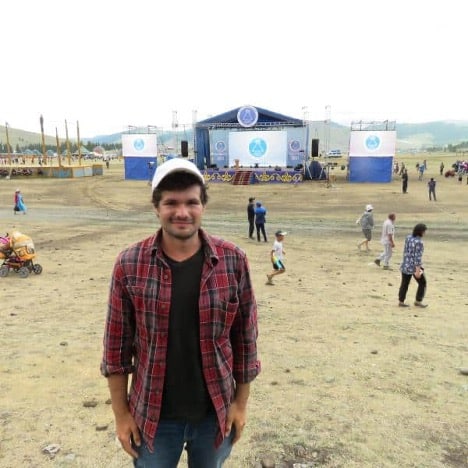
Tyler Adkins’ project seeks to understand the indigenization of late Soviet modes of life in present-day Altai Republic, Russia through an oral history of domestic food production in rural areas. More specifically, this research project examines the paradox of why the domestic labor of food production—ostensibly a “survival” of pre-Soviet rural economy— is now remembered by post-Soviet Altai people as an exemplary instance of the virtues of the Soviet way of life. In combining oral history with ethnography, this project aims to understand not only the late-Soviet period but also contemporary, post-Soviet Altai and its relation to its Soviet past: how do Soviet-era ways of living and working now appear as objects of nostalgic desire, rejection or emulation in the creation of post-Soviet Altai selves?
Ismael Biyashev, University of Illinois at Chicago, “Beyond Myths and Ruins: Archaeology and Nomadism in Russia, 1850-1925”
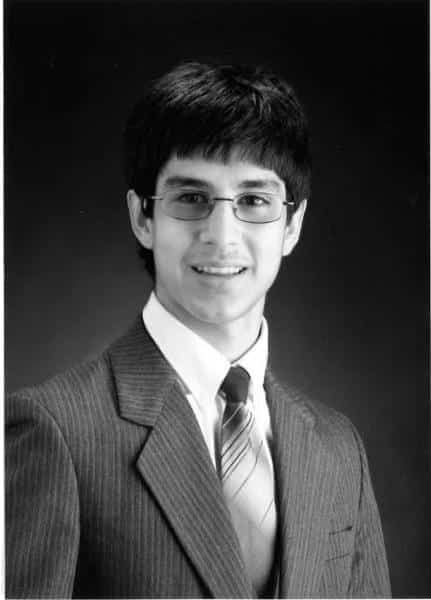
Bridging the divide between the disciplines of history and archaeology, Ismael Biyashev’s dissertation is the first attempt to write a history of the archaeology of nomadism in the Russian empire and the early Soviet Union, and therefore fills an important historiographic gap. Through the analytical framework of the imperial situation, his project builds on the existing historiography of knowledge production in the human sciences in the late-imperial and early Soviet context and introduces an international and intra-regional comparative element. Furthermore, he raises new questions about the nature of Russian imperial modernity and about the raptures and continuities between the late imperial and early Soviet contexts of studying nomadic archaeology. Cognizant of the post-colonial critique of the study of archaeology in the imperial context, his dissertation devotes special attention to native and indigenous historical actors in Southern Russia, Central Asia, and Siberia. Additionally, the case studies that he examines call into question the effortless transition between the imperial and national, thus reevaluating Russia’s trajectory as an imperial power. He considers how multiple imperial agents and subjects, including representatives of nomadic cultures under Russian imperial rule, self-proclaimed amateur archaeologists, and other actors interpreted and instrumentalized ancient nomadic material culture.
Geoffrey Durham, University of Pennsylvania, “The Standards of Evaluation: Weights, Measures, and the Politics of Building a Russian Imperial Economy, 1775-1857”
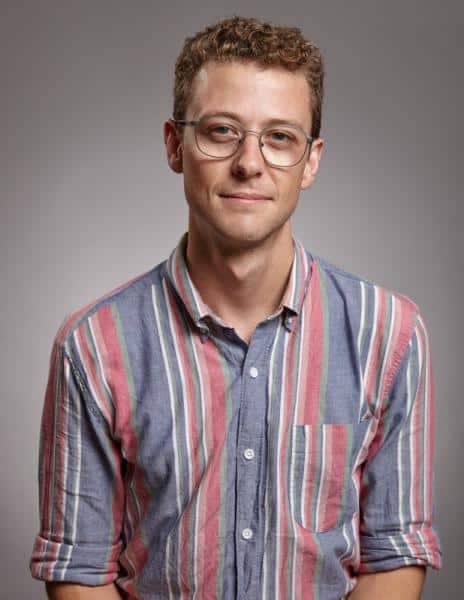
Durham’s dissertation investigates the drive to standardize the units of weight and measurement in the Russian Empire between 1775 and 1857. He begins with Catherine II’s attempts to implement metrological uniformity in order to foster commercial development, and end with the turn to replace Russian units with the metric system. He approaches these reforms as technologies of economy- and state-building enacted during a period marked by substantial territorial expansion, the Napoleonic Wars, and the renovation of imperial governance. In analyzing how the non-standardized metrological system functioned, he also explores why an ethos of standardization emerged in these years. Identifying nodes of support for and opposition to the reforms within the broader population is a central concern of his project. Through the reactions of peasants, merchants, landlords, industrialists, academicians, and bureaucrats he attempts to delineate the consolidation of interest groups along political and economic lines. This project is thus at once a study of the state’s plans to mediate commercial relations and of the people who constituted those relations.
W. Forrest Holden, University of Michigan, “Disciplining Belief: Gender, Superstition, and Witchcraft Persecution, 1760-1860”
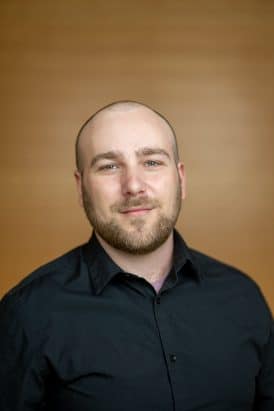
W. Forrest Holden’s dissertation is a cultural history of magic-belief and witchcraft persecution in the eighteenth and nineteenth centuries. Drawing on trial records, published divination pamphlets, and literary representations of magic and witchcraft, it considers the relationship between the Enlightenment notions of individual subjectivity, the decriminalization of witchcraft, and the increasing tendency to accuse women, rather than men, of practicing magic. Based on these sources, this dissertation argues that the Enlightenment understanding of gender that emerged in Western Europe informed the practice of witchcraft persecution on both the part of the state, and on the part of ordinary accusers in witchcraft cases.
Svetlana Ter-Grigoryan, “The Ohio State University, “There is No Sex in the USSR: Sex, Soviet Identity, and Glasnost”

Svetlana Ter-Grigoryan’s dissertation argues that Soviet public discourse, scholarly studies, and cultural representations on and about sexuality acted as a site for Soviet people to explore and negotiate larger issues around Soviet identity, moral upheaval, and rapid reform. Between 1987 and 1991, Soviet people engaged in literary, cultural, medical, and legal debates about the role of sex and sexuality in Soviet society. Prior to glasnost, the official stance of the state was that sex primarily a means to an end: the conception of future Soviet generations. Glasnost allowed people to reconsider several aspects of everyday life, including sexuality. Her project helps expand a limited understanding of the perestroika years by looking beyond the immediate political and economic instabilities and highlighting the country’s social and moral battles. She explores the mutually-constitutive relationship between sexuality and anxieties regarding gender, family, crime, identity, morality, and more under late socialism. Additionally, her project contributes to a growing body of work in the history of sexuality in Russian studies by arguing that sexuality was integral to how people shaped their very identities as Soviet subjects vis-à-vis the Soviet system and state.
2019 Cohen-Tucker Dissertation Research Fellows
Nicholas Bujalski, Cornell University, “Russia’s Peter and Paul Fortress: From Heart of Empire to Museum of the Revolution, 1825-1930”

Nicholas Bujalski’s project is a cultural, intellectual, and spatial history of Russia’s Peter and Paul Fortress: founding site of St. Petersburg, mausoleum of the imperial family, and Romanov Russia’s most notorious political prison. Here the empire’s most illustrious dissidents – Bakunin, Chernyshevsky, Kropotkin, Trotsky – not only suffered, but also wrote novels and treatises, planned future political activities, and reimagined what it meant to be a revolutionary actor in tsarist Russia. As successive dissident generations learned to navigate (and narrate) the Fortress prison cell, this citadel was gradually transformed from a site of autocratic pageantry and mute discipline into a stage for the production of the radical self and, eventually, a soviet Museum of the Revolution. Tracing this development from 1825 to 1930 leads us to new insights into the birth of the Russian revolutionary intelligentsia; the entwinement of symbols, spaces, and subjects in cultures of dissent; and the history of political imprisonment in European modernity.
Virginia Carter Olmsted McGraw, University of North Carolina at Chapel Hill, “Soviet by Design: Fashion, Consumption, and International Competition during Late Socialism, 1948-1980”
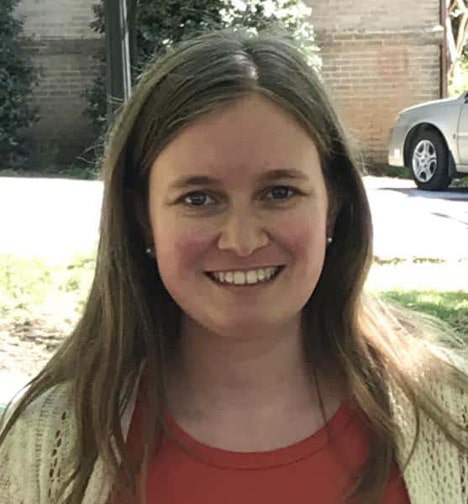
Virginia Olmsted-McGraw’s dissertation examines the evolution of a Soviet fashion industry and the primary state institution of clothing design, the All-Union House of Design (ODMO). The ODMO could influence every level of production, as its designers not only designed clothing, but also advised factory managers, decided which clothing went into mass production, and bore responsibility for marketing. Designers believed that fashion could unify the Soviet Union on two fronts: at home, with citizens wearing Soviet-designed and manufactured clothing, and abroad, at international competitions, as a symbol of the USSR’s artistic and cultural dominance. Olmsted-McGraw studies the ODMO in order to gain a greater understanding of the artistic and cultural history of the USSR, the “cultural” Cold War, and the nature of the command economy. Her project draws on the methodologies of institutional, gender, cultural, and transnational history, which allows me to examine the ODMO’s place within the Soviet state and economy, the impact of the organization domestically and internationally, as well as the artistic and cultural context influencing design. Her study speaks to the limited scholarship on Russian, Soviet, and Eastern bloc fashion, to debates on Cold War competition and consumption, and to emerging discussion of everyday life and the nature of “late” socialism.
2018 Cohen-Tucker Dissertation Research Fellows
Lyudmila Austin, Michigan State University, “Migration, Nation and Selfhood in the Northern Caucasus since the 1970s”
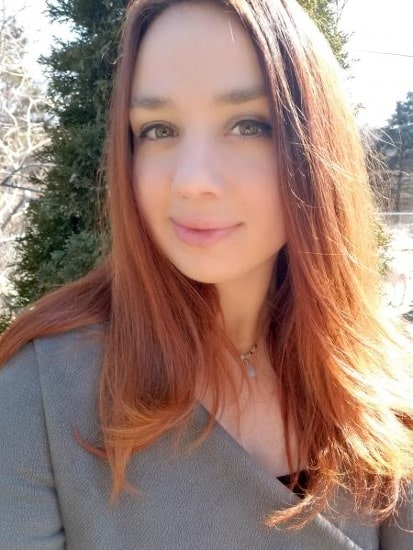
My research explores the migration of the Russian-speaking population since the late-Soviet period, which concentrates on a case-study of migration to the Northern Caucasus. I focus on the heterogeneous, complicated circumstances relevant to this migration, which included not only the fraught “return” of millions of ethnic Russians to their titular nation, but also the movement of other displaced people to Russia. By focusing on the Northern Caucasus, I analyze how influxes of inter-ethnic migration, which included the arrival of many ethnic Russians who showed more affinity to their Soviet rather than ethnic or local affiliations, have affected social dynamics in the region. I investigate not only how regional policies attempted to institutionalize responses to these in-migrants, but also how “groupness”— as a relational and contextual process—transformed at the local level as a result. More explicitly, I consider to what extent—and how—influxes of various migrants contested and contributed to a space that changed dramatically over time as a result of numerously interconnected Soviet structural issues.
Michael Coates, University of California, Berkeley, “The Sources of Soviet Knowledge: A History of the Great Soviet Encyclopedia”

My project is a history of the writing of the three editions of the Great Soviet Encyclopedia. The Great Soviet Encyclopedia was intended to be a revolutionary encyclopedia of a new type, which would transform the way its readers viewed the world. It was to be the tool which would lay the groundwork for the development of an entirely new system of knowledge rooted in the Marxist principles of dialectical materialism. It was to break down the barriers between the disciplines erected by “bourgeois”, anti-materialist scholarship and to reconstruct humanity’s knowledge in a new, distinctly Soviet way. The precise interpretations of this task shifted from edition to edition, and at times the project took on a sharply nationalist tone. The vicissitudes of the encyclopedia project reflect the vicissitudes of the Soviet state’s changing attitudes towards and views on the usage of knowledge.
Rebecca Johnston, University of Texas at Austin, “The Soviet Ministry of Culture: Governing Enlightenment after Stalin”
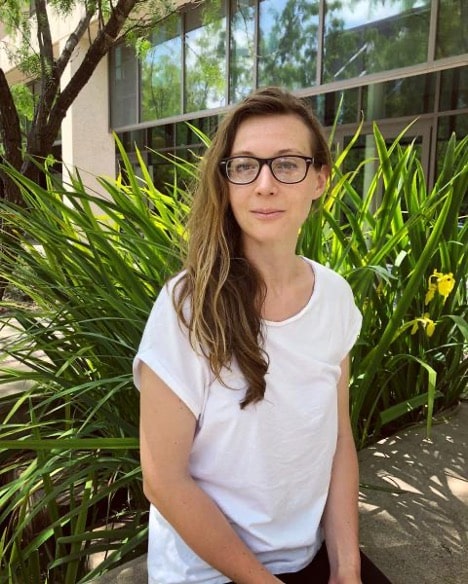
This is a study of the Soviet Ministry of Culture, from its conception in 1953 through the end of the Brezhnev era in 1982. The Ministry of Culture was an unwieldy fusion of six institutions responsible for everything from radio broadcasting and the circus to secondary education and the labor reserves. Its structure and staff changed rapidly and often during its initial years, as it failed to effectively handle such a broad mandate. Despite its role as chief executor of Soviet cultural policy for more than forty years, the ministry has received virtually no scholarly attention. Historians have long argued that culture in the Soviet Union was a vital tool for ideological indoctrination, and, in turn, industrial and agricultural productivity. But the Ministry of Culture tells a different story. My dissertation will redefine our understanding of Khrushchev’s cultural “thaw” and Brezhnev’s proceeding crackdown by demonstrating how late Soviet leaders shifted away from a conception of culture as a vital component of the Soviet project and left cultural institutions to thrive or decay in the wake of their neglect.
Karl Krotke-Crandall, Washington State University, “The Holocaust in Russian Life: New Perspectives on Soviet Jewish Memory”

My project explores the creation of collective memories of Soviet Jews by unpacking the influence of public-Soviet narratives on private-familial memories. By conducting oral history interviews and using qualitative analysis, my project seeks to explore how the collective memories of this Jewish body have changed over time through the exposure of the Soviet public narrative.
Andrei Tcacenco, University of California, Santa Cruz, “The Culture of Complaint: Morality and Intimacy in the USSR, 1953-Present
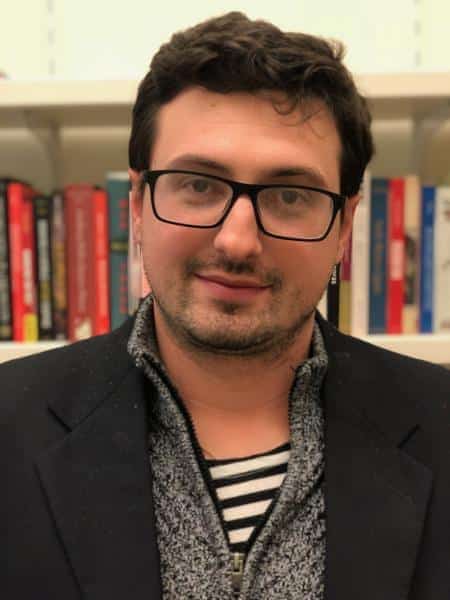
My research looks at Soviet republics outside the Russian Federation such as the Ukrainian and Moldavian SSRs, and takes a more localized approach to understanding the state’s campaigns to produce a moral Soviet citizen during the Postwar period of Soviet history. I look at how interactions between Soviet citizens in the periphery and Central Party organs resulted in a dynamic, negotiated understanding of socialist morality and concepts of the New Socialist Person in new discursive spaces of home entertainment, especially television and radio. Soviet citizens utilized mass media to spark debates about the meaning of Soviet identity, nationalism and morality, and sometimes to express outright hostility toward the Soviet state.
2017 Cohen-Tucker Dissertation Research Fellows
Simon Belokowsky, Georgetown University, “Internal Migration: Rural Migrants to Russophone Cities in the Post-Thaw Period”

More than a million people moved annually from rural areas to the cities of the RSFSR in the 1960s and 1970s. In the dramatic (but by no means unique) case of Belgorod oblast, more than 60 percent of rural youth disappeared from the census rolls between 1959 and 1970 alone, having left for better opportunities in the factories, trade schools, and institutions of higher learning found in the province’s growing cities, never to return to the collective farms. My dissertation analyzes the ways these largely overlooked rural migrants to mid-sized Russian-speaking cities in the 1960s and 1970s adjusted to their new environments, approaching urbanization as a long-term process of social and cultural acclimation on the part of individuals rather than merely as a physical shift of population. With the nearby cities of Belgorod, in the Russian Federation, and Sumy, just over the Ukrainian border, as the focus of my investigation, I rely on sources including school, factory, and kolkhoz documents, judicial records, local Party newspapers, as well as oral histories to identify the changes in worldview and social practices that marked a transition to the city. At a fundamental level, I am interested in mentalities and the way they interact with culture in shaping experience – how rural individuals operated in the space of meanings, symbols, and practices that constituted their habitus. To investigate migrants’ integration into a primarily urban, late-Soviet modernity, I embrace the conceptual lenses and methodologies of historians and anthropologists studying other regions, ultimately building on the work of others in the Soviet field. Given that scholars of the Soviet Union increasingly embrace the possibility of “multiple modernities,” were newcomers to the late-Soviet city acted upon by a generic Soviet modernity, or did they help shape it, for example by appropriating modern objects and materials in their midst according to Madeleine Yue Dong’s model? Were Soviet migrants able to forge new information networks upon their arrival in the city or did the state’s attempt to assert a monopoly on information obviate that process in the Soviet case? Did the changes in sociability Steve Harris associates with the decline of the communal apartment extend to these often unsanctioned migrants? Answering these and similar questions will help us understand the lives of tens of millions who have been largely ignored by historians.
Gabrielle Cornish, Eastman School of Music/University of Rochester, “Listening for Utopia: Music, Technology, and Everyday Life in the Soviet Union, 1960-1990”

Although musicology has dealt with the technological cultures of music in recent years, this work has largely centered on capitalist societies in Western Europe. Meanwhile, recent studies of Soviet music in the post-war period have largely focused on the stylistic features of art music. These approaches overlook socialism as a lived experience in which “ordinary” people, not just big-name composers, engaged with music as a part of everyday life. Without a broader analysis of music’s material cultures, we undervalue the impact of socialist economic systems, ultimately leading to a one-sided understanding of music’s function in the Soviet Union. In my dissertation, I intervene in these scholarly discussions by arguing that musical technology contributed to changing conceptions of a private sphere, individual agency, and personal leisure during late socialism. Combining archival material from printed documents, musical scores, and recordings with oral histories, I argue that musical technology in a broad sense—new instruments like synthesizers, DIY recording and broadcasting devices, and consumer audio products—enabled new modes of musical production, dissemination, and consumption. My project thus places music within a discursive network of state, communal, and individual experiences under Khrushchev’s utopian “fully realized communism” and Brezhnev’s more pragmatic “actually existing socialism.”
Kathryn David, New York University, “Russian Orthodoxy and Soviet Nationalities Policy: Religion and Nation in the Postwar USSR”
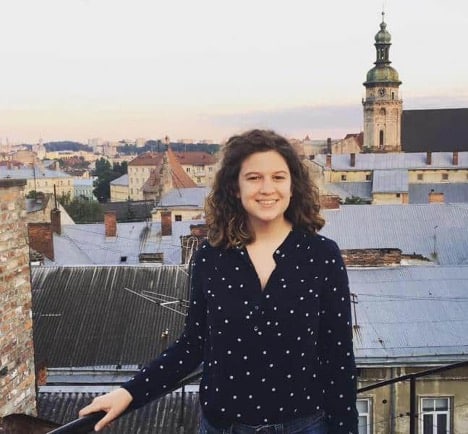
The relationship between Russia and Ukraine has long been analyzed through the lens of the nation, from the advent of national thinking in the Russian imperial period to present day debates about what constitutes Ukrainian and Russian language, culture, history, and borders. As the events of 1946 demonstrate, religion was also an important field of contestation for both national activists in Russia and Ukraine and officials of the Soviet state. The 1946 “reunion” was a twentieth century version of a long-term imperial strategy in the region: competing polities claimed people and territory through transferring physical space as well as symbolic markers of culture and history from one church to the other. My project places the 1946 “reunion” as a new chapter in the process of defining Ukraine. The promotion of Russian Orthodoxy as an official Soviet policy, even during periods of “scientific atheism” in the 1960s and 1970s, to enact what was in effect a Ukrainian nationality policy shows that religion and nationality were not closed off from each other. I will explore the initial events and later reinforcement of the religious “reunion” through two interconnected questions. First, how did state-sponsored conversion create new connections between religious ritual and Soviet state practice? While religion may have been seen as a tool for Soviet policymakers, their choice to re-ascribe belonging for local priests and to alter religious spaces meant that both Russian Orthodoxy and Greek Catholicism were given new meanings as categorizations by those organizing and those included in the “reunion.” Second, how did religion become a register through which to classify and thus create new categories of people in West Ukraine? Inclusion and exclusion by means of religious tactics redefined Ukrainian-ness, Russian-ness and the categorization of West Ukrainian space.
Joy Neumeyer, University of California, Berkeley, “Dead Empire: Visions of the End in Late Socialism”

For 18 years, Leonid Brezhnev was the aging face of Soviet power. As the general secretary decayed on central television, popular jokes portrayed him as a living corpse. Yet the public decline of Brezhnev and the party gerontocracy is only the best-known aspect of a culture that was dying in many ways. In the late Soviet Union’s most popular songs, stories, and films, characters were shot, drowned, suffocated, and stabbed. In the 1970s, Soviet culture was obsessed with death. Never observed by scholars, this fixation runs counter to a recent trend in Soviet history that rejects traditional views of the Brezhnev era as a time of stagnation and instead asserts its vitality. My research will take the pulse of late socialism, weaving together images of the gerontocracy, popular health discourse, and cultural productions, examining who was dying and where in what would turn out to be the final years of empire. Why were sickness, decay, and death such a central part of the culture? My research on death in late Soviet culture will be a fresh entry in the historical debate about stagnation in the Soviet Union. The traditional “stagnation paradigm” holds that Soviet society in the long 1970s between Brezhnev’s 1964 assumption of power and Gorbachev’s perestroika was characterized by inertia in the party and state and cynical disillusionment among the citizenry. My dissertation integrates old and new approaches, considering the aging of the country’s political leadership together with its cultural effervescence. While rejecting Cold War-era rhetoric that sees Soviet society as inferior, I propose returning to the stagnation paradigm to place it on a meaningful new foundation—one that explores why fantasies about death occupied a central part of the late Soviet imagination, and what this may have meant for the fate of the system itself.
2016 Cohen-Tucker Dissertation Research Fellows
Susan Grunewald, Carnegie Mellon University, “German Prisoners of the War in the Soviet Gulag: Life, Law, Memory, 1941-1956”

My dissertation will examine the role of German prisoners of war in the U.S.S.R. from 1941 to 1956. The Soviet government kept roughly 1.5 million German POWs in the Gulag system after the end of the war, the largest and longest held group of prisoners kept by any of the victor nations. The dissertation investigates the motives of the Soviet government in delaying repatriation. It explores the political, diplomatic, and economic motivations of the Soviet state, investigating the economic role the prisoners served in reconstruction, the diplomatic and legal tensions raised by repatriation, and the material conditions in the Gulag camps and labor sites. The dissertation also analyzes the varied meanings that prisoners attached to their experience. By comparing the memoirs written by those repatriated to East Germany with those repatriated to West Germany, it seeks to understand how narratives of the war and its meanings were constructed and framed in these two very different political settings during the Cold War. The dissertation uses both German and Russian published primary and archival sources to explore larger issues regarding Soviet prison labor, postwar diplomacy and international law, and the shaping of narrative among prisoners repatriated to the east and west.
Erin Hutchinson, Harvard University, “The Village Strikes Back: The Cultural Politics of the Nation in the Soviet Union after Stalin”

My dissertation focuses on the leading role that Soviet intellectuals played in the articulation of the nation during the period between Stalin’s death and the advent of perestroika. I explore how the Stalinist onslaught on the rural way of life, in combination with massive postwar urbanization, led to the formation of a new cohort of rural-born intellectuals in the Soviet republics in the 1950s and 1960s. My research explores how rural-born writers from across the Soviet Union—including Russian Village Prose writers— made common cause with members of the political establishment and the urban intelligentsia to promote their own particular national vision. In the decades leading up to perestroika, they sought to redefine the traditional village as the moral nexus of the nation, the church as a constitutive element of national character, and the national landscape as a spiritual resource. While remaining fully integrated into mainstream cultural life, these loyal intellectuals nevertheless developed a strand of thought that presented a powerful challenge to the Soviet moral order. My scholarship, which focuses on the RSFSR, Moldova, Ukraine, and Armenia, is the first to analyze Russian Village Prose writers as part of a broader, pan-Soviet phenomenon.
Dakota Irvin, UNC Chapel Hill, “Revolving Doors of Power: How Revolutionary Ekaterinburg Became Sverdlovsk, 1917-1924”

My dissertation traces the transformation of Ekaterinburg into Sverdlovsk by providing a political, social, and urban history of the city during the years of the Russian Revolution and Civil War. I focus on local institutions, such as the city government, the police, and the press, and their responses to the disorder of revolution as a way to examine the contested creation of new forms of political and social order. Ekaterinburg presents the ideal case to investigate this dynamic, as it changed hands five times after the February Revolution in 1917. My work also introduces new theoretical categories like “order” and “disorder” to the study of the Russian Revolution, and focuses on the development of practices and procedures by competing regimes at the local level to create and maintain stability. I also address the use of local histories and public sites of memory by the Bolsheviks to create stylized remembrances of the revolutionary period after the end of the Civil War in 1920, and show how this process became central to Ekaterinburg’s transformation into Sverdlovsk. Finally, given Ekaterinburg’s unique experience, mine will be the first work to treat the Imperial, Provisional Government, Bolshevik, and White regimes comprehensively.
Kelsey Norris, University of Pennsylvania, “Displaced Persons and the Politics of Family Reunification in the Postwar Soviet Union”
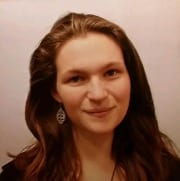
Recent scholarship has focused on displaced persons in Western and Central Europe and revealed that European states endeavored to repatriate DPs and reunite them with their family members out of a conviction that rebuilding war-torn families would help reconstruct war-devastated nations. Does this conception of postwar family reunification hold when we broaden the geographical scope to consider the experiences of the over five million externally displaced Soviet citizens and the approximately 16.5 million Soviet citizens and thousands of Polish citizens displaced within the USSR? Did the Soviet regime also engage in this postwar European project to bolster the family in order to rebuild the nation? Or did the early Bolshevik vision that the state would ultimately supplant the family influence the regime’s response to displacement and family separation? Based on preliminary archival research in Moscow, I hypothesize that the Soviet regime’s management of family reunification was shaped by its prewar history of population control. I argue that Soviet officials were most responsive to appeals from families separated across the new postwar borders in order to facilitate the repatriation of Soviet citizens but did not devote sufficient resources to reunite Soviet families separated internally within the USSR.
John Romero, Arizona State University, “‘Socialist in Form, National in Context’: Soviet High Culture and National Identity in the Tatar Autonomous Republic, 1953-1994”

My project examines the evolution of Soviet nationalities policy in the years after Stalin’s death through the collapse of the Soviet Union. Focusing on the Tatar Autonomous Soviet Socialist Republic (ASSR), the project explores the roles of cultural institutions, notably operas, theaters, and philharmonics, as well as corresponding state bureaucracies and organizations, such as the Tatar branch of the Union of Composers, in delineating and maintaining Tatar national identity. I argue that the linkage between Tatar national culture and Soviet cultural institutions represents a reversal of Lenin’s proclaimed nationalities policy of “national in form, socialist in content,” and that, by the 1950s and beyond, Tatar bureaucrats and artists consciously used Soviet socialist forms to present national content. Moreover, I argue that the continuation of Soviet nation-building policies in the decades after Stalin’s death, a period almost completely overlooked by existing scholarship focusing on the 1920s and 1930s, was instrumental in the Soviet Union’s eventual collapse along national lines and in the origins of nationalist discourses among Tatars and other minority groups that still reside within the boundaries of the Russian Federation.
John Seitz, Iowa State University, “Colonizing the Countryside: Scientific Agriculture and Colonial Control on the Kazakh Steppe, 1881-1928”
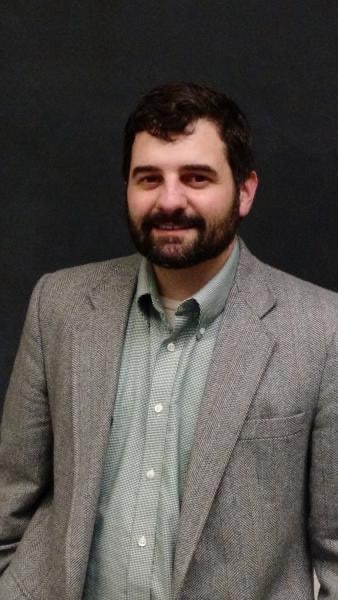
This research is a study of the contest for control in newly conquered lands in Russian Central Asia, and the role that scientific agriculture and resistance played in that contest. It seeks to understand and explain how scientized agriculture was central to attempts to transform both the physical landscape of this region as well as the people who lived and worked on the land. In telling the story of control and conflict on the periphery, it proposes a model that will reshape our understanding of this contest by framing it not as a struggle between two cultures (European and Kazakh), but rather of three contestants (European settlers, scientific specialists, and Kazakh nomads). My research examines the role of three groups in this contest: imperial agricultural scientists (modernizers), and two groups of agriculturalists: namely European settlers and Kazakhs. It will study the agricultural systems of these specialists and two groups of farmers not as static ideals, but rather as changing systems of production and ways of life. Agricultural scientists and rural modernizers influenced this change. This project seeks to understand how agronomists attempted to alter the behaviors of both Kazakh and Russian farmers on the periphery, and how these attempts were navigated by those living on the land.
2023 Cohen-Tucker Dissertation Research Fellows
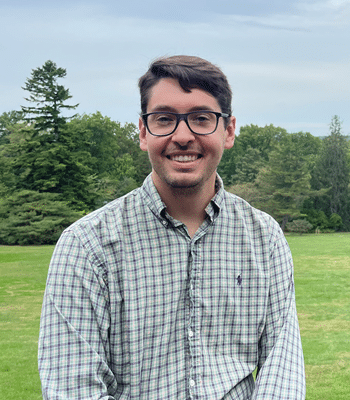
Griffin Creech
History
University of Pennsylvania
“Buriats Beyond Borders: Making and Unmaking Multi-Layered Citizens in the Russia-Mongolia Borderlands, 1890-1938”
“Buriats Beyond Borders” is a political and social history of citizenship in the Russia-Mongolia borderlands. Using sources in Russian, Mongolian, and Buriat, it considers attempts by the Russian imperial, Soviet, and Mongolian states to claim pastoral nomadic Buriats as citizens. The Buriats’ fluid borderland environment oriented them south to Mongolia and west to St. Petersburg and Moscow. My dissertation investigates how citizenship’s equalizing contentions operated amid porous borders, cross-boundary interactions, and ethno-confessional inequalities, and surveys Buriat reactions to state citizenship projects. After tracing the late-nineteenth-century advent of Russian imperial citizenship, I examine Buriat nationalist ideas on membership in a Russian-dominated empire between 1905 and 1917. Following Buriats who crossed this border between 1918 and 1938, I engage the Mongolian socialist state’s perspective, comparing Soviet and Mongolian efforts to make Buriats citizens. Nira Yuval-Davis’s idea of the “multi-layered citizen” conceptualizes how overlapping state initiatives interacted with Buriat visions of citizenship to produce heterogenous citizens who were integrated into certain spheres yet excluded from others. My dissertation provides a new way of understanding the Russian Empire’s and Soviet Union’s presence in Asia by seeing borderlands and citizenship as sites of interaction, eschewing the received frameworks of ideology, geopolitics, and diplomacy.
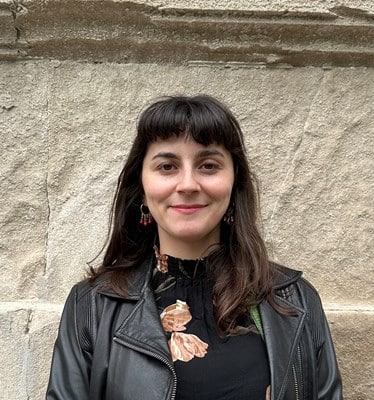
Alexandra Dennett
History of Art + Architecture
Harvard University
Recipient of the Women’s and Gender Studies Fellowship
“Paths of Modern Photography in Central Asia (1890-1940)”
Why do certain images come to represent a place? How does a photographer’s identity impact the photographs they take? These two interrelated questions are central to my dissertation, which examines the role of photography in representing—and misrepresenting—the transformations of Central Asia, from a colony of the Russian Empire into a laboratory for the promotion of the Soviet model and a site for the development of national identity. During a period animated by successive waves of imperialism, revolution, and industrialization, photographs shaped ideas about this region and its culture, especially since circulation in print enabled their transmission across great distances. By comparing the shifting aesthetic and ideological priorities of foreigners who visited Central Asia with those of local practitioners, my research foregrounds the diversity of perspectives recorded in the photographs produced in this major crossroad. I emphasize the remarkable prominence of women in the photographic narration of Central Asia as I consider a variety of photographic “actors:” travelers, studio professionals, amateur correspondents, photojournalists, and photo-editors. These intersecting narratives allow us to better understand how the camera was more than a tool for recording experience; it also enabled photographers to navigate, and even to define, the divergent paths of modernity.
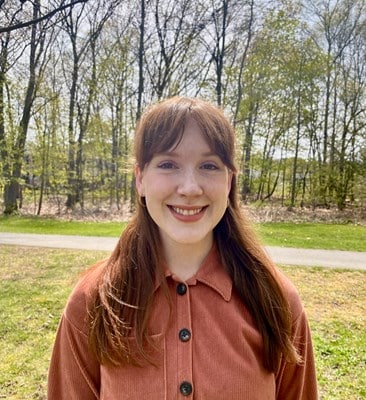
Emma Friedlander
History
Harvard University
“The Soviet New Age: Alternative spirituality and the collapse of communism, 1975-2000”
My dissertation examines the popular culture of alternative spirituality in the Soviet Union from 1975-2000. I approach this history from below, centering the ordinary people most associated with the popular phenomenon, especially women and the lower-to-middle classes. This project asks: what does the Soviet New Age tell us about the lived experience of Soviet collapse? How does it reveal ordinary people’s navigation of the ideological, spiritual, and material crises that engulfed society at this time? I suggest that people experimented with alternative spirituality to fill the spiritual and ideological vacuum left by the collapse of communism. Their attraction to the alternative reflected distrust towards official institutions and ideologies – and overall sense of alienation – that placed the Soviet case within the global processes of late twentieth century postmodernity. I study alternative spirituality as it emerged against the background of Eastern European Christian tradition then subsumed to state atheism in Russia, Ukraine, Lithuania, Latvia, Estonia, and Moldova.

Sophia Kalashnikova Horowitz
History
Harvard University
“Popular Participation in Political Policing Under Stalin and Khrushchev, 1937-1965: The Secret Lives of Soviet Informers”
My dissertation, which includes case studies from Georgia, Estonia, Latvia, Lithuania, Ukraine, Moldova, and Germany, will present the first pan-Soviet history of informing under Stalin and Khrushchev (1937-1953). My project examines the perspectives of both secret policemen and informers, insofar as these are visible in the archive, attempting to unite the two in a broader history of Soviet informing: what did being an informer mean for informers themselves, and how did it change their social lives? How did secret police officers manage individual informers and informer networks, and how did this change over time? I trace the process of managing an informer, including how informers were recruited, how they participated in or were removed from investigations, and how they were released from their duties. The dissertation will reveal the inner dynamics of policing in a society that went through several cycles of political crackdowns and thaws, including the transition from the Stalinist dictatorship to the post-Stalinist system. My research will explore several types of documents located in the National Archives and political police archives in former Soviet republics and countries of the Warsaw Pact. These archival files include reports from the regional organs of the political police to the central political police authorities, the documents of formal inspections of the work of regional and local police branches, orders of the central organs, and political police textbooks, case files, and card catalogues. My project will explore the ways in which informing practices shaped individual experiences, those of families and social networks, and those of communities across the Soviet Union. Changes in political policing contributed to ordinary people’s shifting perceptions of their role as participants in the process of governing their country; the experience of informers presents a vital insight into individuals’ understanding of civic duty and citizenship.
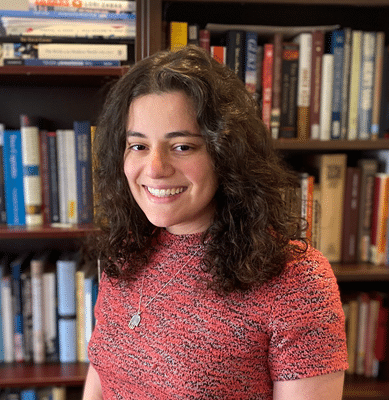
Alexandra Zborovsky
History
University of Pennsylvania
“Should I Stay or Should I Go: Jewish Repatriation, Reunification, and Emigration from the USSR 1955-1995”
During the second half of the twentieth century, Offices of Visas and Registration across the USSR received almost 1.5 million applications from Soviet Jews with a seemingly audacious request: an exit visa. This dissertation explores how Soviet Jews re-outlined the USSR’s ambivalent stance on population movement and more specifically, emigration. Though the contemporary moment often prioritizes conversations on immigration, questions of emigration have produced equally if not more controversial tensions between the state and its citizens over the last several centuries. My investigation begins in the mid-1950s, when 30,000 Soviet Jews immigrated to Israel through an initial repatriation to Poland, and continues through 1995, by which point over one million Soviet Jews found themselves scattered across the globe. While internal migration, displacement, and urbanization once proved vital to early Soviet state-building, by the 1950s the USSR’s policies on movement were fraught with contradiction. And by the mid-to-late twentieth century, when the USSR sought to hinder Jewish emigration, Soviet Jews circumvented its efforts. By emphasizing the agency of everyday emigres, my project explores how Soviet Jews engaged both extra-statal networks, such as the philanthropy or the family, and the USSR’s fraught legal and theoretical conceptions of movement to facilitate their emigration.
2023 Cohen-Tucker Dissertation Completion Fellows

Michael Brinley
History
University of Pennsylvania
“The Cities They Wanted and the Cities They Built: Soviet Chief Architects and Urban Planning in the Era of Developed Socialism, 1954-1985”
My dissertation tells the story of the development of city planning institutions and urban politics in the period from 1957-1985. Drawing on a wide range of published and archival material from five major cities and three former Union republics, I examine how debates among city planners and between architects and various representatives of emerging social sciences in the 1960s were translated into policy that transformed urban politics and provoked widespread public debate well before perestroika. The urbanization process, a civilizing project imbued with the ideological content of the communist party, was supervised by technocrats who were increasingly in dialogue with international counterparts over the question of the limits of growth. By exploring these connections, I put the Soviet experience in dialogue with a broader literature about urban renewal, development, de-industrialization, and neoliberalism in the second half of the twentieth century.

Yaakov Lipsker
Modern Jewish Studies
Jewish Theological Seminary
“Everyday Jewish Nationalism and the Creation of a Citizenry-in-Exile: The Zionist Movement in Late Imperial Russia, 1897-1917”
Lipsker’s research looks at the making of the Zionist movement in imperial Russia between 1897 and 1917. The movement’s founders and early leaders assumed that their sought-after homeland in Palestine would be populated primarily by Jews emigrating from the Russian Empire, home to the largest Jewish population in the world before World War I. Lipsker’s dissertation focuses on the hundreds of Zionist activists in imperial Russia’s western borderlands who set out to re-make ordinary Jews – family members, neighbors, and communities – into nationalist Jews. Using archival materials from three continents and published sources in Russian, Hebrew, Yiddish, and German, his dissertation traces the dissemination of Zionist ideas and practices in classrooms, synagogues, workplaces, salons, and within families, and how Zionists were influenced by parallel national movements in the Russian Empire. His approach emphasizes everyday interactions between movement leaders, local and regional activists, and ordinary Jews in the construction and maintenance of – and often failure to construct or maintain – nationalized identities in an imperial context.

Ksenia Pavlenko
Art History and Visual Studies
Cornell University
“Seeing Expansion: Representation in the Visual Culture of the Late Russian Empire”
“Seeing Expansion: Representation in the Late Russian Empire’s Visual Culture” examines how photography was the primary channel by which the empire constructed discriminatory perceptions of communities from Russian territories in Asia. Drawing on the hierarchies disseminated by ‘type’ photographs, imperial commissions such as paintings, objets d’art, illustrated volumes, and public monuments were designed to beguile viewers and portray certain communities as a timeless or temporally delayed Other. While official photographs crystalized new understandings of difference that validated the violence emanating from Russia’s center onto its surrounding regions, photography conveyed contradictory representations of identity as it spread to territories in Central Asia and eastern borderlands. A comparative approach to modernity reveals how the dazzling effects of media and art proved unwieldy to imperial motives, largely due to the unprecedented forms of expression that photography engendered. While early photography’s conventions reflected expansionist ideologies, the medium channeled unprecedented forms of subjectivity that emerged out of the empire’s refusal to integrate its eastern territories.
2022 Cohen-Tucker Dissertation Research Fellows
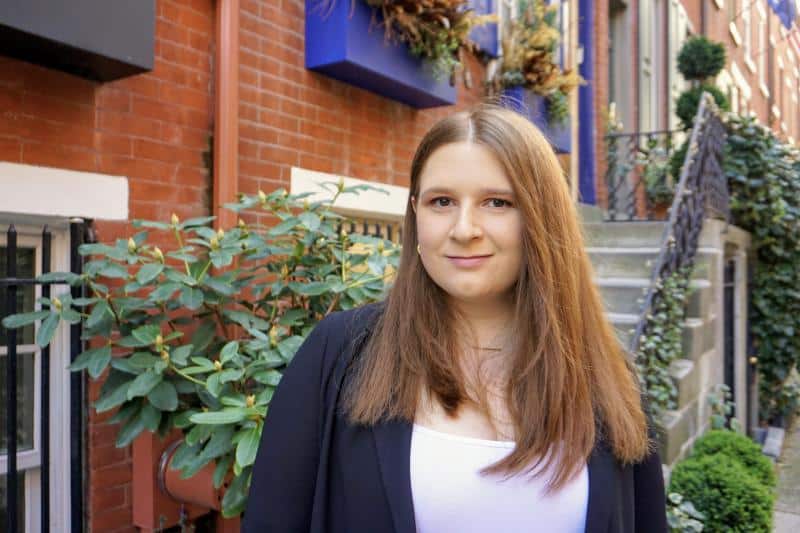
Allison Brooks-Conrad
Music
University of Pennsylvania
Recipient of the Women’s and Gender Studies Fellowship
“Zhenskaya Muzika: Gender, Labor, and Music in the Underground and the Apartment during Late Soviet Socialism”
This dissertation investigates how women living in Soviet Russia used music in their attempts to conform to and diverge from Soviet state policy, social expectations, and gender roles during the late socialist era in the Soviet Union. Brooks-Conrad approached this topic by identifying the intersection of women’s labor and deterritorializing processes and by analyzing performances of femininity through musical repertoire. She contends that women used music and sound to create deterritorialized spaces, out of sight (or earshot) of state authorities. As a result, their labor was invaluable in the maintenance and longevity of different unofficial Soviet music scenes. She interrogates how women used music to articulate a public-facing femininity in line with Soviet expectations. She argues that one way this self-presentation took place was through the music women actively sought out and listened to, as well as through their performance of gendered musical genres. In comparing these seemingly distinct scenes and how women figured in both, she uses a gendered analytic to dismantle the official/unofficial culture binary while showing the points of convergence and significant overlap in scenes of Soviet cultural production, relying on a combination of archival research, printed primary sources, musical analysis, and oral history.

Albert Cavallaro
History
University of Michigan, Ann Arbor
“From Tver to Tashkent: Exploring Citizenship and Nation in 19th Century Russian Museums”
Cavallaro’s dissertation forms two interlocking microhistories examining the intertwined trajectories of two 19th century Russian imperial museums: the Tver Historical Museum, which opened in provincial Tver in 1866, and the National Museum of Turkestan, which opened in colonial, Central Asian Tashkent in 1876. Following these museums from their founding to 1917, his study puts the empire’s colonies and provinces into direct conversation for the first time to show how geographically dispersed but intellectually connected communities engaged in related meaning-making projects. His research operates on three scales: the local, imperial, and global. At the local scale, he examines travelogues, memoirs, provincial newspapers, and exhibition materials to reconstruct the daily life of museums’ employees and visitors. At the imperial scale, Cavallaro explores various literary works and publications of archaeological and ethnographic societies to argue that intellectuals in Moscow and St. Petersburg apprehended provincial and colonial sites in remarkably similar terms: as places of exploitation, where raw materials could be collected and sent to the center. At the global scale, he considers how museums, a new European technology, were involved in networks of knowledge production beyond the empire. His dissertation shows these museums engaged in a single project to historize and create proper models of Russian citizenship and nation. Imperial officials simultaneously claimed affinity with Europe and sought to “Europeanize” museum visitors, and, by extension, the empire itself.

Kim Lacey
History
Washington University, St. Louis
“Border Crossers and the Making of the Russian Far East, 1860-1938”
Taking the city of Vladivostok as the locus of analysis, Lacey’s research challenges a preexisting portrayal of the Russian Far East as a quintessentially Russian place. In this project, she traces the movement of people from Japan and Korea to the RFE between 1860 and 1938 and examine their roles and place in the community. Vladivostok is a crucial site for the study of migration during imperial expansion since it is home to a major port and the terminus of the Trans-Siberian Railway that linked Europe to Asia. It is also close to several East Asian countries. Lacey’s analysis covers major events, including the Russo-Japanese War, the Japanese intervention in the Russian Civil War, and Stalin’s Great Terror. “Border Crossers” breaks new ground by foregrounding the overlooked experiences of transnational migrants and studying the role of gender, ethnicity, and class. The work is based on primary sources collected in archives, including the Russian/Soviet government records, local newspapers, and travelogues. Interviews with individuals in Kazakhstan whose ancestors had migrated to the RFE, personal collections, and memorabilia supplement these archival sources and open up the relationship between the state and individuals for detailed examination. Triangulating analyses of state records, interviews, and other sources offers a new perspective on how migrants negotiated their place in Vladivostok. Simultaneously, it reveals how the RFE was transformed by various migrant communities.

Yacov Zohn
History
University of Wisconsin, Madison
“Homo Sovieticus Goes to Extra Time: Constructing the Soviet Image in Soccer (1946-1992)”
Zohn’s project examines the interplay of local, national, and supranational forces in the politics of representation in the Soviet Union through the lens of the Soviet national soccer team. In tracing the history of the team from the Post-War era to its final collapse in 1992, he aims to understand and illuminate how the Soviet political system sought to form the “ideal” image of the USSR abroad and at home. He will structure my argument by means of selected matches/tournaments of the USSR team that serve as case studies, which thread wider trends. His questions will probe the internal and external dynamics of the team. For example, how did performance on the field reflect/deflect and affect the political landscape? Was the multi-ethnic character of the team an advantage on the field of play, or not? A federation with one of the most heterogeneous populations on the globe was often represented by the narrowest regional choices, with local clubs (especially from Moscow and Kiev) often doubling as the USSR national team. He will scrutinize this paradox within this context through a combination of archival research and interviews primarily in Russia as well as in Ukraine.
2022 Cohen-Tucker Dissertation Completion Fellows

Zukhra Kasimova
History
University of Illinois, Chicago
“Hybridizing Sovietness, Modernity, Nationality and Provinciality in the Post-World War II Uzbek SSR (1941–1981)”
Kasimova argues that Soviet modernity was essentially a hybrid concept. Within this framework, Central Asia as a region ceases being a periphery of the Soviet world and becomes central for understanding processes of hybridization of Soviet modernity. Her project is aimed at decentering Eurocentric narratives of modernity. The Soviet modernity she suggests is multi-lingual; it allows a place for the persistence of Islam in the region (as both religion and cultural text), and it implies the active role of local elites in [re]shaping messages and policies of the center and directly influencing them. The project also explores the heterogeneous nature of the Central Asian region itself, highlighting its internal social, gender, and national stratifications and conflicts that defy any binary explanations and oppositions. Ultimately, Kasimova argues that the hybrid Uzbek modernity decisively influenced the normative Soviet project – by carving in it a place for “Muslim” cultural identification, a concept of national science, and toleration of “national” traditionalism.

Alexander McConnell
History
University of Michigan
“Soviet Humanism after Stalin, 1953-1991”
McConnell’s dissertation traces the conceptual evolution of humanism (gumanizm) in Soviet ideological, philosophical, and cultural discourse during the post-Stalin period. While historians of communism have long devoted attention to postwar “Marxist humanist” movements in Eastern Europe, no comprehensive study of humanism in the USSR has been undertaken. By demonstrating the centrality of this concept to both the Communist Party’s attempted revitalization of socialism after 1953 and dissident challenges to official ideology, it charts the emergence of a new ethical imperative that far outlasted other elements of the post-Stalin cultural “thaw.” At the same time, his project reveals how efforts to draw a moral line under Stalin’s “cult of personality” were complicated by continued reliance on a conceptual vocabulary adopted during the 1930s. Maxim Gorky’s Stalin-era conception of humanism as hatred for enemies persisted alongside the term’s historical associations with Renaissance thought and abstract love for humankind. By examining how contests over the scope and meaning of humanism helped to reshape ideals of socialist personhood after Stalin, McConnell’s dissertation sheds light on a previously unexamined area of late Soviet culture and offers a new intellectual genealogy of Gorbachev’s reform campaigns of the 1980s. His project likewise represents a timely intervention into the nascent scholarship on humanism’s global manifestations during the twentieth century, linking Soviet debates to Cold War ideological contestation with both Maoist China and the West.
2021 Cohen-Tucker Dissertation Research Fellows

Samuel Fajerstein
History
Indiana U Bloomington
“Between Cooperation and Contestation: Agricultural Interactions in the U.S.A. and U.S.S.R., 1917-1991”
Fajerstein’s project contends that agricultural relations between the Soviet Union and the US constitute one of the most significant pieces of the global developmental puzzle. Utilizing materials from archives in the US and Russia, the dissertation will examine these agricultural interactions from 1917-1991, identifying periods of heightened agricultural transfer and assessing each period for its domestic, international, and global significance. As each state examined and reacted to the other’s agricultural systems, transfers of policies and technologies forged paths across the globe that are perceivable today. From food storage technologies, to global grain prices, to fertilizer production, the current global food system was formed along the fine line between agricultural contestation and collaboration in the US and USSR.
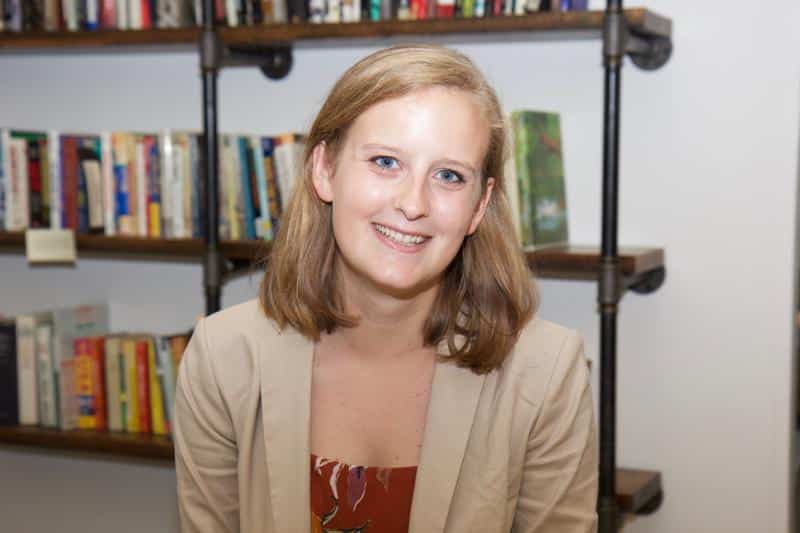
Jennifer Goetz
History
Columbia U
“Developing Soviet Photography, 1937-1963”
Goetz’s dissertation examines photography as hobby and art in the Soviet Union. Despite prominence in the 1920s, by the late 1930s art photography existed on the margins of Soviet culture. Still, from 1945 until 1963 the Soviet state increasingly supported an amateur camera industry. Why did the postwar Stalinist state economically encourage private photography while discouraging state-regulated professional photography? Goetz’s hypothesis is that the Soviet state invested in the camera industry in response to a perceived growth in popular demand for amateur photography, as well as to competition with camera producers abroad. As photography became more accessible, it became, in the eyes of Soviet artists and critics, a less viable artistic medium. The state economic support for private photography supplied and trained the photographers who participated in the resurgence of public photography during the Thaw from 1953 to 1963, showing an important continuity between two periods.

Luke Jeske
History
UNC Chapel Hill
“Orthodox Pilgrimage and the Forging of Russian Identity, 1774-1914”
Jeske’s project examines the evolution of Russian Orthodox Christian pilgrimage to the Holy Lands, from the Treaty of Küçük Kaynarca in 1774 in which Ottomans granted Russians access to the Holy Lands, to the dissolution of pilgrimage networks ushered in by war in 1914. His analysis links pilgrimage to the constructions and rearrangements of imagined communities bound by religion, ethnicity, and empire. As pilgrimage evolved over the century, it brought together peasants and princes, monks and muzhiks animated by the same yearning for the Holy Lands and united by their experiences. He suggests they articulated a “Russianness” rooted in ethnicity and a cultural heritage particular to their empire but connected to the Orthodox peoples and places dispersed from the Balkans to the Red Sea. Jeske recovers notions of belonging fostered among Russians and foreign coreligionists, readers and writers, travelers and the home-bound. In showing how pilgrimage enabled ethnic Russian Orthodox Christians to articulate their own visions of modernity, he contributes to ongoing revisions of the history of Russian Empire.
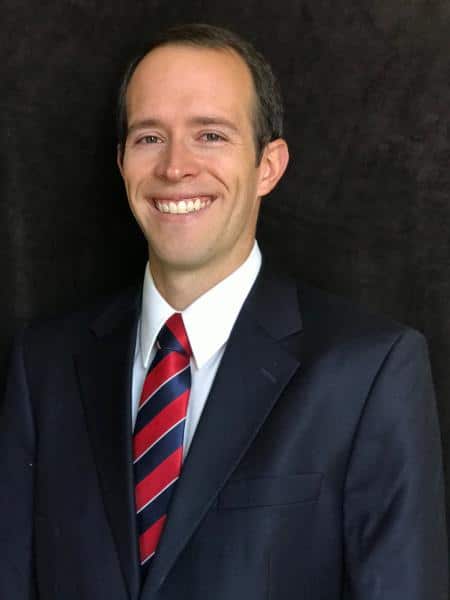
Patrick Monson
History
Princeton U
“The Multiple Meanings of Legal Pluralism in Imperial Russia’s Baltic Provinces, 1860-1917”
This project analyzes the interplay of law and empire, metropole and periphery, through a study of legal reform in the Baltic provinces. Russia’s progressive judicial reform, announced in 1864, incited tensions over the issue of legal homogenization in the Baltics, where German elites controlled the legal system. In the 1860s and 1870s, some central officials, including Baltic Germans, enabled litigants and defendants to participate in court procedures in their native languages. In seeking to designate central judicial institutions as appellate instances, they perceived the supra-ethnic central government as a more impartial arbiter. Monson’s project examines why, in 1889, officials decided to assume responsibility for the interpretation and application of Baltic civil law. The project will explore how this arrangement resulted in Russian inflected interpretations of local law, or non-native pluralism. Since many of these jurists were highly educated and often proponents of individual rights, as well as belonging to various non-Russian ethnic groups, Monson’s research may contradict previous claims that they arbitrarily and incompetently interpreted Baltic civil law.

James Nadel
History
Columbia U
“Jewish Speculation: Russian Jews and Financial Investment in Late Imperial Russia, 1870-1917”
At the end of the nineteenth century, Jews made inroads into the Russian Empire’s financial sector, becoming a significant presence on the novel commodity and stock exchanges made necessary by industrial development. Also, urban migration spread Russian Jews across the wide expanse of the imperial domains, allowing their business relationships to form a crucial ligature in the long-distance circulation of capital throughout the Empire. Such economic networks of coreligionists served as both a solid foundation and a limiting constraint for Russian Jewish speculators living under the Tsarist regime, in which ascribed corporate identities determined social orders and where anti-Jewish legal restriction had intensified in the 1880s. Nadel’s dissertation follows these Russian Jews, who, while negotiating the power dynamics of minority life, adapted their commercial activities to the demands of financial capitalism and proved integral to the financial infrastructure of the largest land empire in the world.
2021 Cohen-Tucker Dissertation Completion Fellows
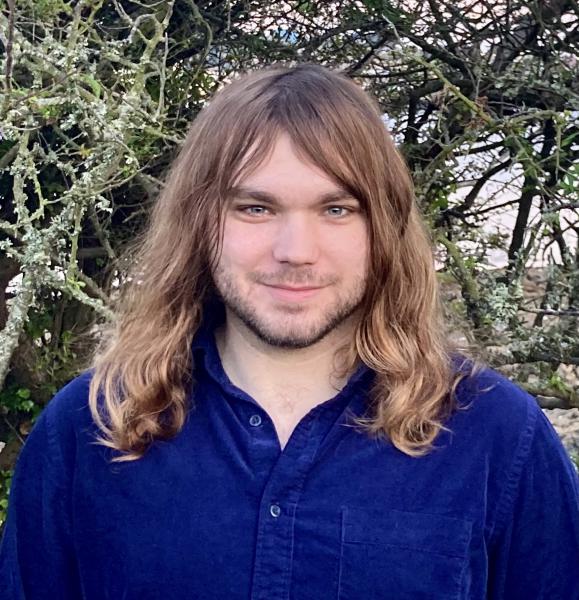
Dominick Lawton
Slavic Languages and Literatures
UC Berkeley
“Revolts of Things: The Poetics of Materialism in Russian Revolutionary Literature, 1909-1939”
Lawton’s dissertation provides a critical history of how industrial development and economic construction, as refracted through Bolshevik materialist ideology, shaped the aesthetics of early Soviet literature. Lawton’s project investigates how writers gave shape to new “Soviet objects,” industrial products which would resist commodification. Amid the violent ruptures that the early twentieth century brought to Russia, even simple things were artistically represented as containing the basis for a revolutionary transformation of modernity. Through interpretations of four major writers of various styles and backgrounds, Lawton traces how early Soviet literary aesthetics arose from, and intervened in, the attempt to construct a new, anti-capitalist industrial modernity. The authors’ work anticipates many of the concerns of the current “new materialist” turn in the humanities and social sciences. Lawton’s project offers a revitalized history of early Soviet literature from the standpoint of its materialist poetics.
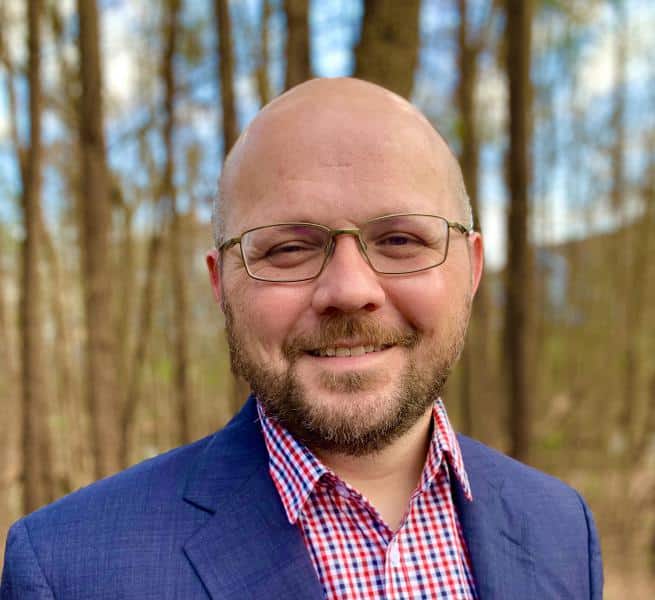
James Nealy
History
Duke U
“The Shchekino Method: Socialist Modernity and Labor, 1960s-1980s”
As the Cold War transformed into a struggle centering on socioeconomic factors, the Soviet Union sought to improve economic efficiency. One manifestation of this change was the “Shchekino Method,” a constellation of factory-level managerial and organizational strategies that resembled tactics typically associated with capitalist systems. Tracing the Shchekino Method from its origins through its dispersal across the Soviet Union, the dissertation challenges the “stagnation” trope in contemporary historiography of the Soviet Union and instead examines the Soviet system’s capacity to change. In doing so, it seeks to place the history of Soviet labor into conversation with that of Europe, the United States, and Japan.

Svetlana Ter-Grigoryan
History
Ohio State U
“There is No Sex in the USSR”: Sex, Soviet Identity, and Glasnost, 1986-1991”
This dissertation explores why sex so captured the interest of Soviet people during perestroika (1986-1991). Between 1986 and 1991, Soviet researchers unearthed realities that the state had long concealed, such as rampant prostitution, sexually transmitted disease (STDs), and high rates of sexual violence. Disillusioned with these harrowing new statistics and political stagnation, Soviet filmmakers, artists, and writers used sexuality as a mode of expression during these years. The conversations of reformers, researchers, and creatives revealed deep fissures in Soviet ideology and moral values. By utilizing discourse analysis, this historical study explores the intersection of sexuality, power, and the state in the perestroika-era USSR. I evaluate the context in which these debates existed and their impact on the revolution that led to the USSR’s collapse. Thus, this project addresses directly the Soviet experience with reform and collapse. It also addresses a previously unexplored aspect of Soviet history – the birth of Russia’s LGBT movement, made possible by glasnost. Most importantly, the dissertation demonstrates the importance of sexual revolutions as catalysts for change, solidifying sexuality studies alongside other modalities of historical study.
2020 Cohen-Tucker Dissertation Research Fellows

Elizabeth Abosch
History
University of Illinois at Urbana-Champaign
“The ‘Outcry from the Criminal Soul:’ The Social Imaginary of Song, Community, and State Power in the Soviet Union, 1920-1980”
My dissertation, “The ‘Outcry from the Criminal Soul:’ the Social Imaginary of Blatnaia Pesnia, Community, and State Power in the Soviet Union, 1920-1980,” will examine the creation and function of a social imaginary of the criminal underworld in Soviet history from 1920 to 1980, from the jazz performer Leonid Utesov’s first years in the Soviet limelight as a performer of blatnaia pesnia—criminal, underground, and prison songs—to the songs of Arkadiy Severny, the “king of underground music.” My research will reveal the history of a seldom studied but dynamic genre of Soviet music. I investigate the paradox of the popularity—or perhaps, necessity—of this social imaginary of a criminal society that had no right to exist in the Soviet project. My dissertation will the ways that people engaged with it to negotiate what it meant to be a Soviet citizen, and their relationship with state authority. It will interrogate the effects and of audiovisual technologies of the twentieth century on popular and mass culture, and the influence on or appropriation of folk cultures into mass culture.
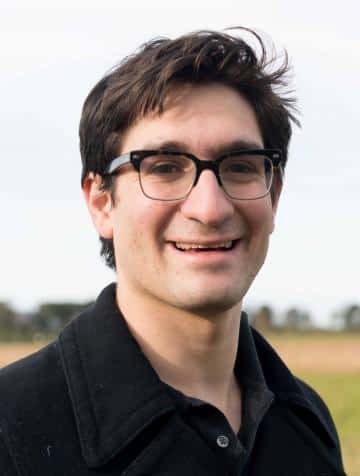
Samuel Finkelman
History
University of Pennsylvania
“Ghetto, Gulag, Geulah: Jewish Nationalism, Inter-ethnic Encounters, and Collective Memory of Catastrophe in the Post-Stalin Soviet Union, 1953-1982”
This dissertation explores the encounter between Jewish and Russian nationalist intellectuals and activists in the post-Stalin Soviet Union, focusing on their mutual efforts to construct collective memories of national catastrophe. The protagonists are Soviet Jews who endeavored to revitalize Jewish national consciousness throughout the Soviet Union in the decades following “the black years” of postwar Stalinism, and their Russian interlocutors. The project’s main primary source base is the self-published literature, or samizdat, these activists and intellectuals produced and disseminated to galvanize national identity throughout the 1960s-1980s. Soviet-Jewish national activists’ exchanges, tensions, and affinities with their Russian counterparts–particularly over the topics of nationally experienced suffering, incarceration, and political violence–motivated new Jewish thinking about nationhood, political community and homeland. Exploring the common ideas and dilemmas, the interactions and exchanges, that linked the Jewish and Russian national movements, this dissertation shows why forces traditionally thought of as hostile to Jewish interests nonetheless significantly influenced Soviet Jews in their formulation of a politics rooted in national redemption, or what Jews call in Hebrew “geulah.” Ideally, this reassessment of late-Soviet Jewish nationalism will stimulate further research on how inter-ethnic exchange paradoxically invigorated nationalist politics throughout the Soviet Union in the post-Stalin era.
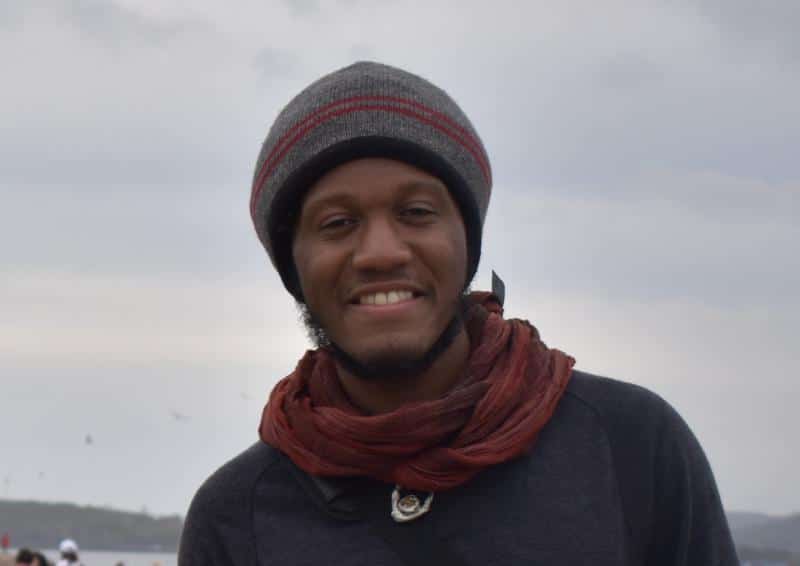
Kamal Kariem
Anthropology
Princeton University
“Believing Conservation: Altering Land Relations and Indigeneity on the Bikin River”
My proposed project broadly investigates environmental governance in the Russian Far East (RFE) through the lens of the recently founded Bikin National Park. Founded in 2015, this National Park is located in the Pozharskii District of Primorskii Krai with offices in Luchegorsk and Krasnyi Yar. Research for the project would primarily occur in Krasnyi Yar and on the Park’s territory and in Vladivostok. This Park is the only protected area in Russia, which has goals not only for the protection of biodiversity but also for the preservation of indigenous culture and traditional ways of life. The largest indigenous group in the region of the Park is the Udege, a small-numbered indigenous people (an official legal designation). From exploratory research conducted during winter 2018, many Udege are happy with the arrangement and the protection of their traditional lands. This satisfaction with the National Park stimulates my research interest in the Bikin National Park as a potential model for how protected areas and indigenous people could relate. Through my project, I aim to understand Post-Soviet transformations in nature, identity, and property triggered by conservation, with an eye toward how conservation work protects biodiversity and preserves cultural practices and ways of life.
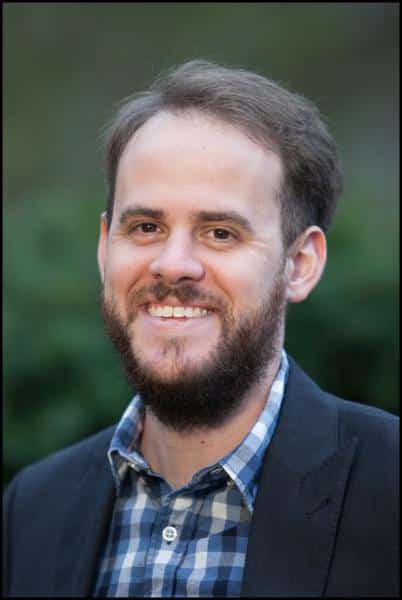
Harrison King
History
University of California, Berkeley
“From Porous Frontier to Cold War Boundary: A Biography of the Russian-Ottoman and Soviet-Turkish Border, 1878-1991”
My dissertation explores the entangled histories of the Soviet Union and the Turkish Republic through the prism of state and nation-building campaigns in the former Russian-Ottoman borderlands. Focusing on the provinces of Batum, Kars, and Ardahan, annexed by the Russian Empire in the Russo-Ottoman War (1877-78), I trace the remaking of this multiethnic frontier as it was divided between two revolutionary states after the First World War. Through a bottom-up comparison of Soviet and Turkish modernization drives in Batumi in Soviet Georgia and Kars in eastern Turkey, I juxtapose the process of building a multinational socialist state in Transcaucasia with the equally transformative drive to construct a homogeneous Turkish nation-state, underscoring the affinities between two utopian political projects that aimed to reshape their societies in radical ways. Grounding my research in the experiences of predominately Muslim populations as they encountered and contested Sovietization and secularizing Kemalist reforms at the local level, I demonstrate how similar post-imperial trajectories unfolded across the Soviet-Turkish border as internationalist Bolsheviks and Turkish nationalists observed each other closely and violently enacted their kindred visions of modernity. Lastly, as both states became increasingly concerned with securing their borderlands and forging “ideal” citizens, I show how fruitful cooperation and anti-imperialist solidarity during the interwar period descended into a bitter Cold War rivalry that persisted until the Soviet Union’s dissolution in 1991.
2020 Cohen-Tucker Dissertation Completion Fellows

Matthew Honegger
Music
Princeton University
“Stalinist Cultural Diplomacy and the Origins of Soviet-U.S. Musical Exchange, 1925-1960”
“Stalinist Cultural Diplomacy and the Origins of Soviet-U.S. Musical Exchange, 1925-1960” recovers an early history of Soviet efforts to forge musical ties with the United States. Drawing on institutional records, correspondence, scores, recordings, memoirs, and published and unpublished music criticism gathered through extensive archival work in the United States and Russia, I reassess this contact’s extent and legacy. I trace its beginnings during the interwar period, its culmination during the Second World War, and its demise and transformation during the first years of the Cold War. My work tells an institutional story of how and why the intimate model of Stalinist cultural diplomacy came to be replaced by the formal and highly publicized reciprocity of Cold War cultural diplomacy and a microhistorical story about the ways in which the idiosyncrasies of state-backed exchange shaped personal relationships, memory, emotions, and self-fashioning. By emphasizing continuity between the interwar and postwar periods, I demonstrate that the “beginning” of Cold War exchange in the late 1950s was less a beginning than a reset, reconfiguration, and reimagining.
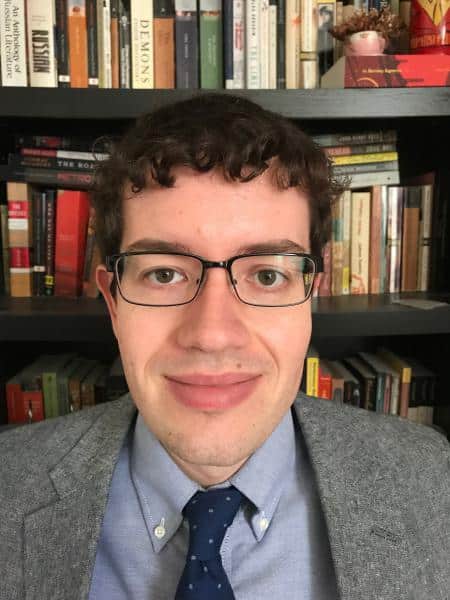
Matthew Klopfenstein
History
University of Illinois at Urbana-Champaign
“Performing Death, Embodying Modernity: Media Spectacle, Public Emotion, and Modern Selves in the Celebrity Funerals of Russian Female Performers, 1859-1919”
In my dissertation, I analyze the public funerals of famous women opera stars, actors of the stage and screen, and popular singers as a social phenomenon in late imperial Russia. While scholars have recognized major public funerals as important social events in the Russian Empire, attention has focused almost exclusively on the deaths of male writers, thinkers, and political figures. Through five in-depth case studies, I demonstrate that female performers were the subject of some of the largest and most-discussed public events in Russian history at the time. I analyze the empire-wide press coverage of the deaths and funerals of these performers to argue that emotion, gender, and mass media were interrelated elements central to the history of the Russian public sphere in the tumultuous period before the 1917 Revolution. I argue that these funerals and the enormous press attention they generated show that these women were among the era’s most socially-resonant figures; their lives provided influential new models of modern identity rooted in an emotionally performative idea of sincerity, and their deaths were public spectacles prompting debate on pressing issues of cultural and social boundaries, health and the body, and the state of society.
2019 Cohen-Tucker Dissertation Research Fellows

Tyler Adkins
Anthropology
Princeton University
“Talkan in the Age of Mechanical Reproduction: Making, Working and Consuming in the Late-Soviet Altai Mountains”
Tyler Adkins’ project seeks to understand the indigenization of late Soviet modes of life in present-day Altai Republic, Russia through an oral history of domestic food production in rural areas. More specifically, this research project examines the paradox of why the domestic labor of food production—ostensibly a “survival” of pre-Soviet rural economy— is now remembered by post-Soviet Altai people as an exemplary instance of the virtues of the Soviet way of life. In combining oral history with ethnography, this project aims to understand not only the late-Soviet period but also contemporary, post-Soviet Altai and its relation to its Soviet past: how do Soviet-era ways of living and working now appear as objects of nostalgic desire, rejection or emulation in the creation of post-Soviet Altai selves?

Ismael Biyashev
History
University of Illinois at Chicago
“Beyond Myths and Ruins: Archaeology and Nomadism in Russia, 1850-1925”
Bridging the divide between the disciplines of history and archaeology, Ismael Biyashev’s dissertation is the first attempt to write a history of the archaeology of nomadism in the Russian empire and the early Soviet Union, and therefore fills an important historiographic gap. Through the analytical framework of the imperial situation, his project builds on the existing historiography of knowledge production in the human sciences in the late-imperial and early Soviet context and introduces an international and intra-regional comparative element. Furthermore, he raises new questions about the nature of Russian imperial modernity and about the raptures and continuities between the late imperial and early Soviet contexts of studying nomadic archaeology. Cognizant of the post-colonial critique of the study of archaeology in the imperial context, his dissertation devotes special attention to native and indigenous historical actors in Southern Russia, Central Asia, and Siberia. Additionally, the case studies that he examines call into question the effortless transition between the imperial and national, thus reevaluating Russia’s trajectory as an imperial power. He considers how multiple imperial agents and subjects, including representatives of nomadic cultures under Russian imperial rule, self-proclaimed amateur archaeologists, and other actors interpreted and instrumentalized ancient nomadic material culture.

Geoffrey Durham
History
University of Pennsylvania
“The Standards of Evaluation: Weights, Measures, and the Politics of Building a Russian Imperial Economy, 1775-1857”
Durham’s dissertation investigates the drive to standardize the units of weight and measurement in the Russian Empire between 1775 and 1857. He begins with Catherine II’s attempts to implement metrological uniformity in order to foster commercial development, and end with the turn to replace Russian units with the metric system. He approaches these reforms as technologies of economy- and state-building enacted during a period marked by substantial territorial expansion, the Napoleonic Wars, and the renovation of imperial governance. In analyzing how the non-standardized metrological system functioned, he also explores why an ethos of standardization emerged in these years. Identifying nodes of support for and opposition to the reforms within the broader population is a central concern of his project. Through the reactions of peasants, merchants, landlords, industrialists, academicians, and bureaucrats he attempts to delineate the consolidation of interest groups along political and economic lines. This project is thus at once a study of the state’s plans to mediate commercial relations and of the people who constituted those relations.

W. Forrest Holden
History
University of Michigan
“Disciplining Belief: Gender, Superstition, and Witchcraft Persecution, 1760-1860”
W. Forrest Holden’s dissertation is a cultural history of magic-belief and witchcraft persecution in the eighteenth and nineteenth centuries. Drawing on trial records, published divination pamphlets, and literary representations of magic and witchcraft, it considers the relationship between the Enlightenment notions of individual subjectivity, the decriminalization of witchcraft, and the increasing tendency to accuse women, rather than men, of practicing magic. Based on these sources, this dissertation argues that the Enlightenment understanding of gender that emerged in Western Europe informed the practice of witchcraft persecution on both the part of the state, and on the part of ordinary accusers in witchcraft cases.

Svetlana Ter-Grigoryan
History
The Ohio State University
“There is No Sex in the USSR: Sex, Soviet Identity, and Glasnost”
Svetlana Ter-Grigoryan’s dissertation argues that Soviet public discourse, scholarly studies, and cultural representations on and about sexuality acted as a site for Soviet people to explore and negotiate larger issues around Soviet identity, moral upheaval, and rapid reform. Between 1987 and 1991, Soviet people engaged in literary, cultural, medical, and legal debates about the role of sex and sexuality in Soviet society. Prior to glasnost, the official stance of the state was that sex primarily a means to an end: the conception of future Soviet generations. Glasnost allowed people to reconsider several aspects of everyday life, including sexuality. Her project helps expand a limited understanding of the perestroika years by looking beyond the immediate political and economic instabilities and highlighting the country’s social and moral battles. She explores the mutually-constitutive relationship between sexuality and anxieties regarding gender, family, crime, identity, morality, and more under late socialism. Additionally, her project contributes to a growing body of work in the history of sexuality in Russian studies by arguing that sexuality was integral to how people shaped their very identities as Soviet subjects vis-à-vis the Soviet system and state.
2019 Cohen-Tucker Dissertation Completion Fellows
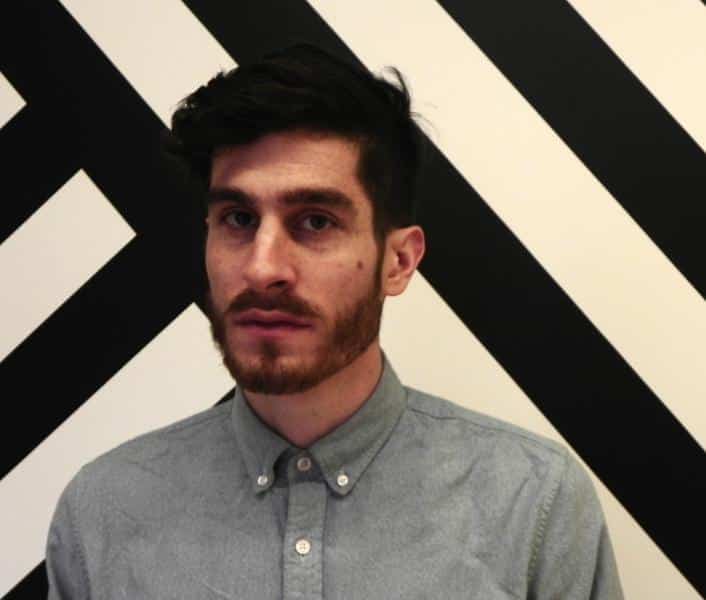
Nicholas Bujalski
History
Cornell University
“Russia’s Peter and Paul Fortress: From Heart of Empire to Museum of the Revolution, 1825-1930”
Nicholas Bujalski’s project is a cultural, intellectual, and spatial history of Russia’s Peter and Paul Fortress: founding site of St. Petersburg, mausoleum of the imperial family, and Romanov Russia’s most notorious political prison. Here the empire’s most illustrious dissidents – Bakunin, Chernyshevsky, Kropotkin, Trotsky – not only suffered, but also wrote novels and treatises, planned future political activities, and reimagined what it meant to be a revolutionary actor in tsarist Russia. As successive dissident generations learned to navigate (and narrate) the Fortress prison cell, this citadel was gradually transformed from a site of autocratic pageantry and mute discipline into a stage for the production of the radical self and, eventually, a soviet Museum of the Revolution. Tracing this development from 1825 to 1930 leads us to new insights into the birth of the Russian revolutionary intelligentsia; the entwinement of symbols, spaces, and subjects in cultures of dissent; and the history of political imprisonment in European modernity.
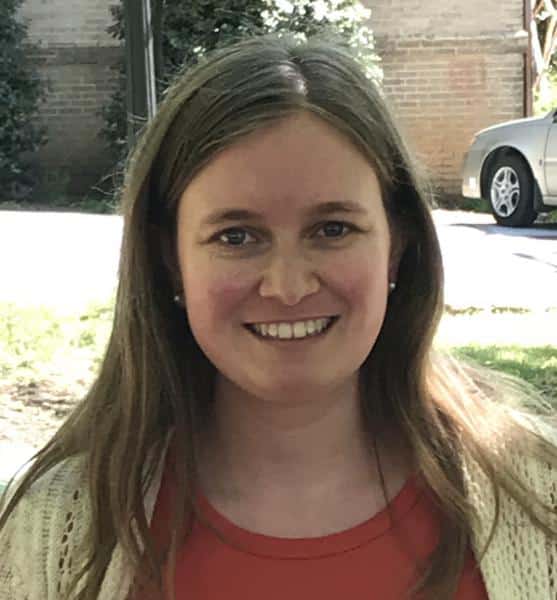
Virginia Carter Olmsted McGraw
History
University of North Carolina at Chapel Hill
“Soviet by Design: Fashion, Consumption, and International Competition during Late Socialism, 1948-1980”
Virginia Olmsted-McGraw’s dissertation examines the evolution of a Soviet fashion industry and the primary state institution of clothing design, the All-Union House of Design (ODMO). The ODMO could influence every level of production, as its designers not only designed clothing, but also advised factory managers, decided which clothing went into mass production, and bore responsibility for marketing. Designers believed that fashion could unify the Soviet Union on two fronts: at home, with citizens wearing Soviet-designed and manufactured clothing, and abroad, at international competitions, as a symbol of the USSR’s artistic and cultural dominance. Olmsted-McGraw studies the ODMO in order to gain a greater understanding of the artistic and cultural history of the USSR, the “cultural” Cold War, and the nature of the command economy. Her project draws on the methodologies of institutional, gender, cultural, and transnational history, which allows me to examine the ODMO’s place within the Soviet state and economy, the impact of the organization domestically and internationally, as well as the artistic and cultural context influencing design. Her study speaks to the limited scholarship on Russian, Soviet, and Eastern bloc fashion, to debates on Cold War competition and consumption, and to emerging discussion of everyday life and the nature of “late” socialism.
2018 Cohen-Tucker Dissertation Research Fellows
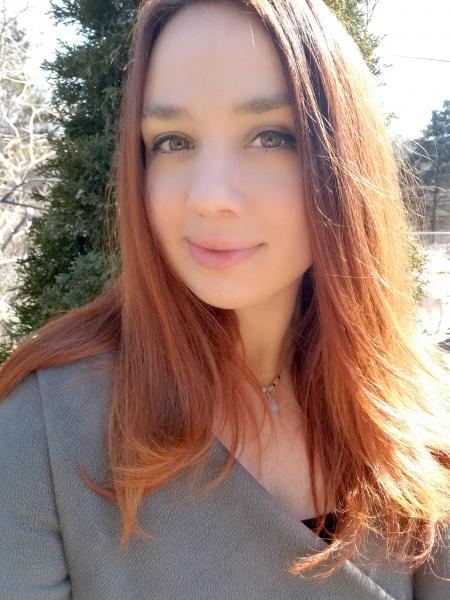
Lyudmila Austin
History
Michigan State University
“Migration, Nation and Selfhood in the Northern Caucasus since the 1970s”
My research explores the migration of the Russian-speaking population since the late-Soviet period, which concentrates on a case-study of migration to the Northern Caucasus. I focus on the heterogeneous, complicated circumstances relevant to this migration, which included not only the fraught “return” of millions of ethnic Russians to their titular nation, but also the movement of other displaced people to Russia. By focusing on the Northern Caucasus, I analyze how influxes of inter-ethnic migration, which included the arrival of many ethnic Russians who showed more affinity to their Soviet rather than ethnic or local affiliations, have affected social dynamics in the region. I investigate not only how regional policies attempted to institutionalize responses to these in-migrants, but also how “groupness”— as a relational and contextual process—transformed at the local level as a result. More explicitly, I consider to what extent—and how—influxes of various migrants contested and contributed to a space that changed dramatically over time as a result of numerously interconnected Soviet structural issues.

Michael Coates
History
University of California, Berkeley
“The Sources of Soviet Knowledge: A History of the Great Soviet Encyclopedia”
My project is a history of the writing of the three editions of the Great Soviet Encyclopedia. The Great Soviet Encyclopedia was intended to be a revolutionary encyclopedia of a new type, which would transform the way its readers viewed the world. It was to be the tool which would lay the groundwork for the development of an entirely new system of knowledge rooted in the Marxist principles of dialectical materialism. It was to break down the barriers between the disciplines erected by “bourgeois”, anti-materialist scholarship and to reconstruct humanity’s knowledge in a new, distinctly Soviet way. The precise interpretations of this task shifted from edition to edition, and at times the project took on a sharply nationalist tone. The vicissitudes of the encyclopedia project reflect the vicissitudes of the Soviet state’s changing attitudes towards and views on the usage of knowledge

Rebecca Johnston
History
University of Texas at Austin
“The Soviet Ministry of Culture: Governing Enlightenment after Stalin”
This is a study of the Soviet Ministry of Culture, from its conception in 1953 through the end of the Brezhnev era in 1982. The Ministry of Culture was an unwieldy fusion of six institutions responsible for everything from radio broadcasting and the circus to secondary education and the labor reserves. Its structure and staff changed rapidly and often during its initial years, as it failed to effectively handle such a broad mandate. Despite its role as chief executor of Soviet cultural policy for more than forty years, the ministry has received virtually no scholarly attention. Historians have long argued that culture in the Soviet Union was a vital tool for ideological indoctrination, and, in turn, industrial and agricultural productivity. But the Ministry of Culture tells a different story. My dissertation will redefine our understanding of Khrushchev’s cultural “thaw” and Brezhnev’s proceeding crackdown by demonstrating how late Soviet leaders shifted away from a conception of culture as a vital component of the Soviet project and left cultural institutions to thrive or decay in the wake of their neglect.

Karl Krotke-Crandall
History
Washington State University
“The Holocaust in Russian Life: New Perspectives on Soviet Jewish Memory”
My project explores the creation of collective memories of Soviet Jews by unpacking the influence of public-Soviet narratives on private-familial memories. By conducting oral history interviews and using qualitative analysis, my project seeks to explore how the collective memories of this Jewish body have changed over time through the exposure of the Soviet public narrative.

Andrei Tcacenco
History
University of California, Santa Cruz
“The Culture of Complaint: Morality and Intimacy in the USSR, 1953-Present”
My research looks at Soviet republics outside the Russian Federation such as the Ukrainian and Moldavian SSRs, and takes a more localized approach to understanding the state’s campaigns to produce a moral Soviet citizen during the Postwar period of Soviet history. I look at how interactions between Soviet citizens in the periphery and Central Party organs resulted in a dynamic, negotiated understanding of socialist morality and concepts of the New Socialist Person in new discursive spaces of home entertainment, especially television and radio. Soviet citizens utilized mass media to spark debates about the meaning of Soviet identity, nationalism and morality, and sometimes to express outright hostility toward the Soviet state.
2017 Cohen-Tucker Dissertation Research Fellows
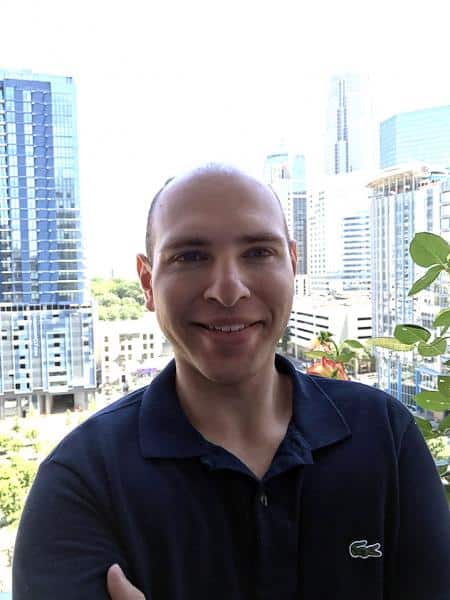
Simon Belokowsky
History
Georgetown University
“Internal Migration: Rural Migrants to Russophone Cities in the Post-Thaw Period”
More than a million people moved annually from rural areas to the cities of the RSFSR in the 1960s and 1970s. In the dramatic (but by no means unique) case of Belgorod oblast, more than 60 percent of rural youth disappeared from the census rolls between 1959 and 1970 alone, having left for better opportunities in the factories, trade schools, and institutions of higher learning found in the province’s growing cities, never to return to the collective farms. My dissertation analyzes the ways these largely overlooked rural migrants to mid-sized Russian-speaking cities in the 1960s and 1970s adjusted to their new environments, approaching urbanization as a long-term process of social and cultural acclimation on the part of individuals rather than merely as a physical shift of population. With the nearby cities of Belgorod, in the Russian Federation, and Sumy, just over the Ukrainian border, as the focus of my investigation, I rely on sources including school, factory, and kolkhoz documents, judicial records, local Party newspapers, as well as oral histories to identify the changes in worldview and social practices that marked a transition to the city. At a fundamental level, I am interested in mentalities and the way they interact with culture in shaping experience – how rural individuals operated in the space of meanings, symbols, and practices that constituted their habitus. To investigate migrants’ integration into a primarily urban, late-Soviet modernity, I embrace the conceptual lenses and methodologies of historians and anthropologists studying other regions, ultimately building on the work of others in the Soviet field. Given that scholars of the Soviet Union increasingly embrace the possibility of “multiple modernities,” were newcomers to the late-Soviet city acted upon by a generic Soviet modernity, or did they help shape it, for example by appropriating modern objects and materials in their midst according to Madeleine Yue Dong’s model? Were Soviet migrants able to forge new information networks upon their arrival in the city or did the state’s attempt to assert a monopoly on information obviate that process in the Soviet case? Did the changes in sociability Steve Harris associates with the decline of the communal apartment extend to these often unsanctioned migrants? Answering these and similar questions will help us understand the lives of tens of millions who have been largely ignored by historians.
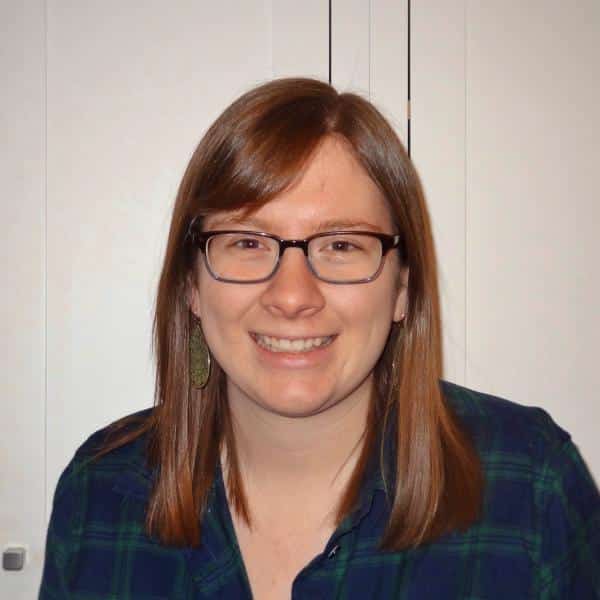
Gabrielle Cornish
Musicology
Eastman School of Music/University of Rochester
“Listening for Utopia: Music, Technology, and Everyday Life in the Soviet Union, 1960-1990”
Although musicology has dealt with the technological cultures of music in recent years, this work has largely centered on capitalist societies in Western Europe. Meanwhile, recent studies of Soviet music in the post-war period have largely focused on the stylistic features of art music. These approaches overlook socialism as a lived experience in which “ordinary” people, not just big-name composers, engaged with music as a part of everyday life. Without a broader analysis of music’s material cultures, we undervalue the impact of socialist economic systems, ultimately leading to a one-sided understanding of music’s function in the Soviet Union. In my dissertation, I intervene in these scholarly discussions by arguing that musical technology contributed to changing conceptions of a private sphere, individual agency, and personal leisure during late socialism. Combining archival material from printed documents, musical scores, and recordings with oral histories, I argue that musical technology in a broad sense—new instruments like synthesizers, DIY recording and broadcasting devices, and consumer audio products—enabled new modes of musical production, dissemination, and consumption. My project thus places music within a discursive network of state, communal, and individual experiences under Khrushchev’s utopian “fully realized communism” and Brezhnev’s more pragmatic “actually existing socialism.”
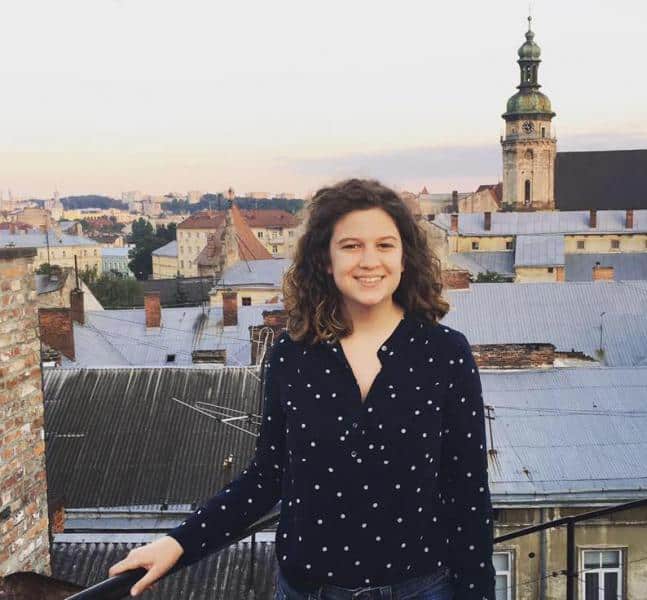
Kathryn David
History
New York University
“Russian Orthodoxy and Soviet Nationalities Policy: Religion and Nation in the Postwar USSR”
The relationship between Russia and Ukraine has long been analyzed through the lens of the nation, from the advent of national thinking in the Russian imperial period to present day debates about what constitutes Ukrainian and Russian language, culture, history, and borders. As the events of 1946 demonstrate, religion was also an important field of contestation for both national activists in Russia and Ukraine and officials of the Soviet state. The 1946 “reunion” was a twentieth century version of a long-term imperial strategy in the region: competing polities claimed people and territory through transferring physical space as well as symbolic markers of culture and history from one church to the other. My project places the 1946 “reunion” as a new chapter in the process of defining Ukraine. The promotion of Russian Orthodoxy as an official Soviet policy, even during periods of “scientific atheism” in the 1960s and 1970s, to enact what was in effect a Ukrainian nationality policy shows that religion and nationality were not closed off from each other. I will explore the initial events and later reinforcement of the religious “reunion” through two interconnected questions. First, how did state-sponsored conversion create new connections between religious ritual and Soviet state practice? While religion may have been seen as a tool for Soviet policymakers, their choice to re-ascribe belonging for local priests and to alter religious spaces meant that both Russian Orthodoxy and Greek Catholicism were given new meanings as categorizations by those organizing and those included in the “reunion.” Second, how did religion become a register through which to classify and thus create new categories of people in West Ukraine? Inclusion and exclusion by means of religious tactics redefined Ukrainian-ness, Russian-ness and the categorization of West Ukrainian space.

Joy Neumeyer
History
University of California, Berkeley
“Dead Empire: Visions of the End in Late Socialism”
For 18 years, Leonid Brezhnev was the aging face of Soviet power. As the general secretary decayed on central television, popular jokes portrayed him as a living corpse. Yet the public decline of Brezhnev and the party gerontocracy is only the best-known aspect of a culture that was dying in many ways. In the late Soviet Union’s most popular songs, stories, and films, characters were shot, drowned, suffocated, and stabbed. In the 1970s, Soviet culture was obsessed with death. Never observed by scholars, this fixation runs counter to a recent trend in Soviet history that rejects traditional views of the Brezhnev era as a time of stagnation and instead asserts its vitality. My research will take the pulse of late socialism, weaving together images of the gerontocracy, popular health discourse, and cultural productions, examining who was dying and where in what would turn out to be the final years of empire. Why were sickness, decay, and death such a central part of the culture? My research on death in late Soviet culture will be a fresh entry in the historical debate about stagnation in the Soviet Union. The traditional “stagnation paradigm” holds that Soviet society in the long 1970s between Brezhnev’s 1964 assumption of power and Gorbachev’s perestroika was characterized by inertia in the party and state and cynical disillusionment among the citizenry. My dissertation integrates old and new approaches, considering the aging of the country’s political leadership together with its cultural effervescence. While rejecting Cold War-era rhetoric that sees Soviet society as inferior, I propose returning to the stagnation paradigm to place it on a meaningful new foundation—one that explores why fantasies about death occupied a central part of the late Soviet imagination, and what this may have meant for the fate of the system itself.
2016 Cohen-Tucker Dissertation Research Fellows
Susan Grunewald
History
Carnegie Mellon University

“German Prisoners of War in the Soviet Gulag: Life, Law, Memory, 1941-1956”
My dissertation will examine the role of German prisoners of war in the U.S.S.R. from 1941 to 1956. The Soviet government kept roughly 1.5 million German POWs in the Gulag system after the end of the war, the largest and longest held group of prisoners kept by any of the victor nations. The dissertation investigates the motives of the Soviet government in delaying repatriation. It explores the political, diplomatic, and economic motivations of the Soviet state, investigating the economic role the prisoners served in reconstruction, the diplomatic and legal tensions raised by repatriation, and the material conditions in the Gulag camps and labor sites. The dissertation also analyzes the varied meanings that prisoners attached to their experience. By comparing the memoirs written by those repatriated to East Germany with those repatriated to West Germany, it seeks to understand how narratives of the war and its meanings were constructed and framed in these two very different political settings during the Cold War. The dissertation uses both German and Russian published primary and archival sources to explore larger issues regarding Soviet prison labor, postwar diplomacy and international law, and the shaping of narrative among prisoners repatriated to the east and west.
Erin Hutchinson
History
Harvard University
“The Village Strikes Back: The Cultural Politics of the Nation in the Soviet Union after Stalin”
My dissertation focuses on the leading role that Soviet intellectuals played in the articulation of the nation during the period between Stalin’s death and the advent of perestroika. I explore how the Stalinist onslaught on the rural way of life, in combination with massive postwar urbanization, led to the formation of a new cohort of rural-born intellectuals in the Soviet republics in the 1950s and 1960s. My research explores how rural-born writers from across the Soviet Union—including Russian Village Prose writers— made common cause with members of the political establishment and the urban intelligentsia to promote their own particular national vision. In the decades leading up to perestroika, they sought to redefine the traditional village as the moral nexus of the nation, the church as a constitutive element of national character, and the national landscape as a spiritual resource. While remaining fully integrated into mainstream cultural life, these loyal intellectuals nevertheless developed a strand of thought that presented a powerful challenge to the Soviet moral order. My scholarship, which focuses on the RSFSR, Moldova, Ukraine, and Armenia, is the first to analyze Russian Village Prose writers as part of a broader, pan-Soviet phenomenon.
Dakota Irvin
History
University of North Carolina, Chapel Hill
“Revolving Doors of Power: How Revolutionary Ekaterinburg Became Sverdlovsk, 1917-1924”
My dissertation traces the transformation of Ekaterinburg into Sverdlovsk by providing a political, social, and urban history of the city during the years of the Russian Revolution and Civil War. I focus on local institutions, such as the city government, the police, and the press, and their responses to the disorder of revolution as a way to examine the contested creation of new forms of political and social order. Ekaterinburg presents the ideal case to investigate this dynamic, as it changed hands five times after the February Revolution in 1917. My work also introduces new theoretical categories like “order” and “disorder” to the study of the Russian Revolution, and focuses on the development of practices and procedures by competing regimes at the local level to create and maintain stability. I also address the use of local histories and public sites of memory by the Bolsheviks to create stylized remembrances of the revolutionary period after the end of the Civil War in 1920, and show how this process became central to Ekaterinburg’s transformation into Sverdlovsk. Finally, given Ekaterinburg’s unique experience, mine will be the first work to treat the Imperial, Provisional Government, Bolshevik, and White regimes comprehensively.
Kelsey Norris
History
University of Pennsylvania
“Displaced Persons and the Politics of Family Reunification in the Postwar Soviet Union”
Recent scholarship has focused on displaced persons in Western and Central Europe and revealed that European states endeavored to repatriate DPs and reunite them with their family members out of a conviction that rebuilding war-torn families would help reconstruct war-devastated nations. Does this conception of postwar family reunification hold when we broaden the geographical scope to consider the experiences of the over five million externally displaced Soviet citizens and the approximately 16.5 million Soviet citizens and thousands of Polish citizens displaced within the USSR? Did the Soviet regime also engage in this postwar European project to bolster the family in order to rebuild the nation? Or did the early Bolshevik vision that the state would ultimately supplant the family influence the regime’s response to displacement and family separation? Based on preliminary archival research in Moscow, I hypothesize that the Soviet regime’s management of family reunification was shaped by its prewar history of population control. I argue that Soviet officials were most responsive to appeals from families separated across the new postwar borders in order to facilitate the repatriation of Soviet citizens but did not devote sufficient resources to reunite Soviet families separated internally within the USSR.
John Romero
History
Arizona State University
“‘Socialist in Form, National in Context’: Soviet High Culture and National Identity in the Tatar Autonomous Republic, 1953-1994”
My project examines the evolution of Soviet nationalities policy in the years after Stalin’s death through the collapse of the Soviet Union. Focusing on the Tatar Autonomous Soviet Socialist Republic (ASSR), the project explores the roles of cultural institutions, notably operas, theaters, and philharmonics, as well as corresponding state bureaucracies and organizations, such as the Tatar branch of the Union of Composers, in delineating and maintaining Tatar national identity. I argue that the linkage between Tatar national culture and Soviet cultural institutions represents a reversal of Lenin’s proclaimed nationalities policy of “national in form, socialist in content,” and that, by the 1950s and beyond, Tatar bureaucrats and artists consciously used Soviet socialist forms to present national content. Moreover, I argue that the continuation of Soviet nation-building policies in the decades after Stalin’s death, a period almost completely overlooked by existing scholarship focusing on the 1920s and 1930s, was instrumental in the Soviet Union’s eventual collapse along national lines and in the origins of nationalist discourses among Tatars and other minority groups that still reside within the boundaries of the Russian Federation.
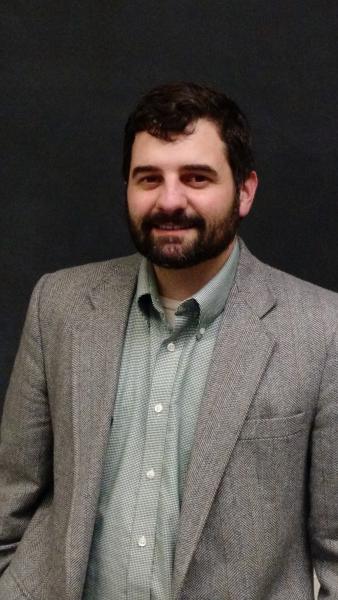
John Seitz
History
Iowa State University
“Colonizing the Countryside: Scientific Agriculture and Colonial Control on the Kazakh Steppe, 1881-1928”
This research is a study of the contest for control in newly conquered lands in Russian Central Asia, and the role that scientific agriculture and resistance played in that contest. It seeks to understand and explain how scientized agriculture was central to attempts to transform both the physical landscape of this region as well as the people who lived and worked on the land. In telling the story of control and conflict on the periphery, it proposes a model that will reshape our understanding of this contest by framing it not as a struggle between two cultures (European and Kazakh), but rather of three contestants (European settlers, scientific specialists, and Kazakh nomads). My research examines the role of three groups in this contest: imperial agricultural scientists (modernizers), and two groups of agriculturalists: namely European settlers and Kazakhs. It will study the agricultural systems of these specialists and two groups of farmers not as static ideals, but rather as changing systems of production and ways of life. Agricultural scientists and rural modernizers influenced this change. This project seeks to understand how agronomists attempted to alter the behaviors of both Kazakh and Russian farmers on the periphery, and how these attempts were navigated by those living on the land.
